New London, Connecticut: fish and ships and so much more
Whale Tail Fountain and Nathan Hale Schoolhouse, New London, Connecticut
New London, Connecticut’s location just off Route 95 makes it a convenient place to visit, whether for a few hours, a weekend getaway, or for a stay long enough to take in the best of the area’s attractions and rich maritime heritage. It is just two hours south of Boston and three hours north of New York City by car. Amtrak trains stop right downtown in the Historic Waterfront District.
Amtrak train at Union Railway Station, New London, Connecticut
New London is an ideal place to stop for a snack or to relax with a good meal at a friendly, family-run café or restaurant. It is likely you will find yourself chatting with one of the owners or friendly local people and opting to spend more time here.
Muddy Waters, a popular café in New London, Connecticut
Sue Devlin, co-owner of Muddy Waters, New London, Connecticut
historical hotspot Daddy Jack’s, New London, Connecticut
Jack Chaplin, whose latest restaurant is Daddy Jack’s in New London
You need not go far to stumble upon history in this seaside setting. It is all around and described right on sidewalk plaques. One outside Daddy Jack’s on 181 Bank Street notes that this colonial building from 1790 was built as the home of lumberyard operator Jonathan Starr and housed a drug store for 80 years. New London is a place to delve as deeply as you please in the rich military and maritime heritage.
plaque the U. S. Custom House, 150 Bank Street, New London, Connecticut
plaque at Daddy Jack’s restaurant, 181 Bank Street, New London, Connecticut
plaque at site of The Crocker House Hotel, patronized by U.S. Presidents, New London, Connecticut
plaque at site of the stagecoach-era former Steamboat Hotel, New London, Connecticut
original site of the Nathan Hale Schoolhouse, New London, CT
plaque at site of the Mohican Hotel, New London, Connecticut
This is a place to relax while browsing the art galleries, antique shops, and unique boutiques. You can find first-rate entertainment at the Garde Arts Center, take a boat trip, or just stroll the historic streets.
Hygienic Galleries, Bank Street, New London, Connecticut
Gallery at Firehouse Square, New London, Connecticut
Garde Arts Center, New London, Connecticut
Fishers Island ferry, New London, Connecticut
Fort Trumbull State Park, New London, Connecticut
Custom House Maritime Museum, New London, Connecticut
Colorful murals add vibrancy to the downtown area.
Willie Nelson mural, New London, Connecticut
mural on Hygienic Art building, New London, Connecticut
scuba mural, New London, Connecticut
tall ship mural, New London, Connecticut
Hollywood mural, New London, Connecticut
wildlife mural, New London, Connecticut
mural of musicians, New London, Connecticut
Girl With the Pearl Earring mural, New London, Connecticut
Tourists feel welcome but the city is not touristy. This early British settlement is reawakening and evolving from its golden age as “The Whaling City,” and ready to be explored. New London’s maritime past and its role in American history live on in its notable 18th and 19th century architecture, and each structure has its own story.
First Congregational Church and City Hall, New London, Connecticut
grand homes along Hempsted Street, New London
Public Library, New London, Connecticut
Courthouse, New London, Connecticut
The long dock that runs from the railway station into the Thames River is a reminder of times when luxurious steamboats carried passengers and freight traveling by train between New York and Boston.
dock at Union Railway Station, New London, Connecticut
A panel on the dock describes the various ships and vessels that now cruise the waters. There are barges, oil tankers and cargo-laden commercial freighters. Smaller cruise ships like the American Eagle stop as they tour the Northeast coast.
Ships and vessels on the Thames, New London, Connecticut
The Cross Sound Ferry, the Cape Henlopen, carries up to 90 cars and 900 passengers between New London to Orient Point, New York. It was built as a World War II landing craft and served in the invasion of Normandy on D-Day, 1944.
The Cape Henlopen runs between New London to Orient Point, New York.
The 162′ M/V Race Point carries up to 40 cars and 250 passengers in a twenty minute trip to the exclusive Fishers Island, New York.
M/V Race Point ferry from New London to Fishers Island
New London is home to the U. S. Coast Guard Academy. You might see a Coast Guard cutter patrolling Long Island Sound or spot the 295′ tall ship, the Barque Eagle. Built in 1936 to train cadets in Nazi Germany, the Barque Eagle is now a classroom at sea for future U. S. Coast Guard officers. Tall ships are also seen during the summertime schooner challenge.
The Coast Guard Academy, seen from the grounds of the Lyman Art Museum, New London, CT
There is a museum on the academy’s campus. An expanded National Coast Guard Museum on the waterfront is in the works.
banner at the U. S. Coast Guard Academy, New London, CT
banner at the U. S. Coast Guard Academy, New London, CT
You might spot a submarine with its tugboat escort in the Thames. General Dynamics Electric Boat has been building them for the United States Navy since 1915. The design and engineering facilities are in New London and the construction shipyard is across the river in Groton, which was once part of New London.
submarine and tugboat, spotted from Coast Guard Academy lot, New London, Connecticut
New London became the site of a naval base at the end of the Civil War. The Naval Submarine Base New London, which was established before the start of World War I, and its submarine school are across the river in Groton. The first nuclear powered submarine, the USS Nautilus, was launched in the Thames River in 1954 and New London continues to be a home port for the Navy’s submarines.
National Submarine Memorial, Groton, Connecticut
A statue of Eugene O’Neill, America’s only Nobel-Prize winning playwright, is by the harbor. It was commissioned in 1988 by George White, the president of the Eugene O’Neill Theater in nearby Waterford, as part of the centennial celebration of the Nobel and Pulitzer Prize winning playwright’s birth. O’Neill is depicted as a young boy wearing high-button shoes and sitting on a rock while sketching the New England waterfront. The pose was inspired by a photograph from 1895.
Eugene O’Neill boyhood statue, New London, Connecticut
Monte Cristo Cottage, Eugene O’Neill’s boyhood summer home, is named in honor of his father, actor James O’Neill and his most popular role as Edmond Dantes in “The Count of Monte Cristo.”
This National Historic Landmark is now a museum with a permanent exhibition of an extensive collection of artifacts and memorabilia. It was the setting for two of O’Neill’s most notable works, “Long Days Journey Into Night” and “Ah, Wilderness!”
Monte Cristo Cottage, New London, Connecticut
Hygienic Art, at 79 Bank Street, is one of New London’s top community development projects. It originated in 1979 when the local art community wanted an outsiders’ art festival similar to the “Salon Des Independent,” a late 19th century art movement in Paris that grew after many innovative artists were excluded from the aristocratic art exhibitions at the Salon. Those exhibits in old cafés in shabby areas like Montmarte were open to all. The Hygienic Art building was originally a whaling company’s provisioning store and crews’ quarters, and, like many other New London buildings, is listed on the National Register of Historic Buildings.
Hygienic Art gallery, New London, Connecticut
Hygienic Galleries, New London, Connecticut
Where to start
One of the most enjoyable ways to get an overview of the city and to learn about its history and architecture, coastline, favorite local restaurants is by taking a cleverly named Wheeling City Segway Tour. When retired attorney Dawn Harkness moved to the Whaling City she fused her passion for Segway tours as the best way to see a city with the needshe saw for an entertaining and informative way to see the city’s highlights. She covers a lot of ground while narrating through speakers the handlebars. Participants learn how easy it is to safely maneuver a Segway before heading off on a memorable adventure.
preparing for a Wheeling City Segway Tour, New London, Connecticut
preparing for a Wheeling City Segway Tour, New London, Connecticut
Two tours are offered Mondays through Saturdays.The 10 A.M. The morning Downtown Tour is an opportunity to learn about New London’s history and architecture. In addition to the downtown area, it passes Waterfront Park and Fort Trumbull and offers views of the Thames River and Long Island Sound.
Visitor Center, Fort Trumbull, New London, Connecticut
The afternoon Beaches Tour rolls along the boardwalk and a nature trail past Ocean Beach Park, and by Connecticut’s oldest and tallest lighthouse, New London Harbor Light. The tour starts at Mitchell College.
boardwalk, Ocean Beach Park, New London, Connecticut
History runs deep
New London is at the mouth of the wide Thames River, with easy access to Long Island Sound and the Atlantic Ocean. It has the only deep harbor between Newport, RI and New York and seldom freezes. The Mohegan and Pequot people and their ancestors fished and traded in this region.
What became known as New London was founded in this prime location in 1646 by John Winthrop, Jr., son of the founder of the Massachusetts Bay Colony. Winthrop secured the charter of Connecticut from King Charles II in 1662 and was also the Governor of Connecticut.
statue of John Winthrop, New London, Connecticut
Its easy access to the sea and abundance of hardwood forests made New London an ideal site for shipbuilding. The city was also a busy West Indies trade hub. Colonial farmers wanted British goods like cloth, crockery, glassware, tea, and tools. Produce was abundant in New England, and they sold their surplus, along with lumber and animals, in the West Indies in exchange for the sugar, molasses, and rum they could trade for British goods.
The tall white New London Harbor Lighthouse (1760) was the first lighthouse on Long Island Sound and the fourth in North America. King George II bought the land for it and George Washington signed papers authorizing the purchase of whale oil for its lamps. Levies on local shipping paid for its maintenance.
Harbor Light, New London, Connecticut
The city seal from the time when it was incorporated in 1784 foretells what ensued with its spirited motto “Mare Liberum,” or “Freedom of the Seas.” British taxes were evaded by smuggling and New London Harbor became a hideaway for privateers, who captured and looted hundreds of enemy ships.
New London became a naval operations base during the Revolutionary War (1765–1783). The obelisk across the river in Groton’s Fort Griswold stands in memory of the September 6, 1781 raid when Connecticut native, former American General and then British Brigadier General Benedict Arnold burned down the cities on both sides of the harbor. It was the last British victory in the Revolutionary War.
entrance to Fort Griswold, Groton, Connecticut
monument, Fort Griswold, Groton, Connecticut
Fort Griswold, Groton, Connecticut
Fort Griswold, Groton, Connecticut
The new federal government enacted taxes on imports in 1789 and created the Customs Service to collect it. A year later they established the Revenue Cutter Service to reduce loss through smuggling. The Revenue Cutter’s School of Instruction was established at Fort Trumbull in 1910. In 1915 the Revenue Cutter and Lifesaving Services were merged to create the U. S. Coast Guard, which was moved to its present location in 1932. The Lighthouse service was merged with the Coast Guard in 1939.
Coast Guard Museum, New London, Connecticut
When President Jefferson’s Embargo Act of 1807 prohibited European imports, Connecticut’s Governor Trumbull refused to enforce it. Federal policy was seen as favoring the South, and New England’s emerging manufacturing trade was threatened. Although many Connecticut men did serve in the invasion of British Canada and in defending against the British blockade of the Connecticut coast, Governor Griswold refused President Madison’s request to send the state militia for the War of 1812, the “Second War of Independence”. Secesssion from the Union was discussed.
During the War of 1812, US Navy Captain Stephen Decatur had the New London Harbor Light turned off to make it difficult for British ships to navigate the harbor. No one knows for sure who hung two blue lights in 1813 to warn the British that Decatur and his three ships were trying to pass through the harbor. Decatur was trapped for months in what became known as the British Blockade of New London.
whale mural, New London, Connecticut
By the mid-19th century, New London, like nearby Nantucket and New Bedford, was one of the busiest whaling ports in the world. Blubber was used to make the whale oil for lamps and the engines and machinery of the Industrial Revolution. Precious ambergris went into fine perfume.
Manufacturing boomed, and foreign labor moved in to fill the many job openings, adding diversity to the city.
diversity mural, New London, Connecticut
Whaling fortunes were invested in railroads to bring manufactured products to port. The hospital, library and cultural institutions were built. Mansions like the Greek Revival ones along “Whale Oil Row” made the city the architectural treasure of today.
Union Railway Station (1888) was designed by Henry Hobson Richardson, one of America’s foremost 19th century architects. Though Richardson was known for the Romanesque Revival style of Boston’s Trinity Church, he designed Union Railway Station more like another of his projects, Harvard’s Severs Hall. It is said that felt the simpler style was more in harmony with the local architecture.
Whale Tail Fountain and Union Railway Station, New London, Connecticut
With its railway and luxurious steamboats, New London became a transportation hub and tourist destination. A summer colony flourished between 1850 and 1930. President Ulysses Grant and former President Chester Arthur were among the guests at the Pequot House.
Downtown New London today
On the city side of the station, at the Parade Plaza, the Whale Tail Fountain, a 7,000 pound bronze life-size tail of a sperm whale sounding represents the rich maritime history of “The Whaling City.” Beginning on Memorial Day, 250 gallons of water per minute gushes from the tail fin, creating a waterfall that delights children of all ages.
Whale Tail Fountain and Nathan Hale Schoolhouse, New London, Connecticut
The one room schoolhouse where Yale graduate Nathan Hale served as a New London schoolmaster was relocated just across the road. Hale left after a year to join a Revolutionary War regiment and is best remembered for his last words before being hanged by the British as a spy in 1776, ”I only regret that I have but one life to lose for my country.’’
Nathan Hale Schoolhouse, New London, Connecticut
The soaring Soldiers’ and Sailors’ Monument on Parade Plaza is dedicated to the city’s Civil War veterans. It was donated by the Lawrence family, whose fortune was made in the whaling industry. The monument is topped by an allegorical figure representing Peace.
Soldiers’ and Sailors’ Monument on Parade Plaza, New London, Connecticut
Other notable 18th and 19th century sites
Nine generations of the family lived in the Hempsted House, one of oldest houses in Connecticut. It is on the outskirts of the main downtown area and is one of the few wooden houses that survived Benedict Arnold’s 1781 fiery raid. Joshua Hempstead II, who was born there in 1678, kept a diary for nearly fifty years and carefully documented colonial life in New England. His journals includes local people, including the slave Adam Jackson. The adjacent 18th-century stone house was built by Joshua’s grandson, Nathaniel Hempsted, a merchant and rope maker.
Home of Joshua Hempsted, New London, Connecticut
stone house of Nathaniel Hempsted, grandson of Joshua Hempsted, New London, Connecticut
The New London Public Library (1890) was built by the successor firm to Union Railway Station architect Richardson, in his signature Romanesque Revival style. The initial funding was given by Henry Philemon Haven, one of New London’s wealthiest whaling merchants. Renowned sculptor Augustus Saint-Gaudens did the bas-relief of Haven on the south porch.
Public Library, New London, Connecticut
The New London Superior Courthouse was built between 1784 and 1814, high on a hill and away from the harbor, after Benedict Arnold burned down the original one.
British naval officers joined the celebration ball held here at the end of the War of 1812. Bodies of those who died in the Civil War were brought here for identification. It is one of the nation’s oldest courthouses in continuous use.
Courthouse, New London, Connecticut
One brick house stands out among the closely-spaced wooden houses along the narrow block-long Historic Starr Street. These homes were generally built between 1835 and 1895, a time of commercial growth and maritime prosperity along Bank Street. Most are in Greek Revival or Italianate in style, with pediments and fan windows.
While it is usually the homes of the wealthy that are preserved, these belonged to people with middle class occupations — a soap factory worker, marble polisher, plumber, and blacksmith. Many worked in the whaling industry. Later, there was a railroad clerk and an engineer. The Masonic Temple at the end of the street was built as a Universalist Church.
Historic Starr Street, New London, Connecticut
The Custom House Maritime Museum was built by architect Robert Mills, who also designed the Washington Monument. It is the oldest operating customs house in the country. The wooden doors are made of wood from the USS Constitution.
There are permanent exhibits and artifacts on the area lighthouses, U. S. Customs, and the Amistad. It Lighthouse tours and boat trips are offered and there is an annual chowda’ fest.
Custom House Maritime Museum, New London, Connecticut
Custom House Maritime Museum, New London, Connecticut
New London’s role in abolition goes back to the capture of the Spanish schooner Amistad, which sailed from Cuba carrying captive Africans. The captives gained control of the ship, were intercepted by a U. S. Navy revenue cutter, and brought to New London.
The ship and its cargo were auctioned off at the front steps of the Custom House. The Africans stood trial for mutiny and murder of the captain. The widespread debate that ensued strengthened the abolitionist movement.
model of the Amistad, Custom House Maritime Museum, New London, Connecticut
Slavery was still legal in Connecticut, but not New York. An Amistad owner, Jose Ruiz, had told New Londoner Dwight P. Janes, an abolitionist, that none of the captives spoke Spanish or English because they were from Africa. This convinced Janes that they were freeborn Africans, not Cuban slaves, strengthening the case, and he enlisted the support of other abolitionists.
President John Quincy Adams won an appeal for their freedom in the first Supreme Court human rights-freedom case to set African captives free. They returned to Sierra Leone aboard a missionary ship.
Custom House Maritime Museum, New London, Connecticut
A short drive from the downtown area
New London is also home to Connecticut College. Its beautiful 750 acre arboretum is open to the public seven days a week from dawn to dusk. There are three major plant collections. The Campus Landscape has 120 acres of trees and shrubs from around the world. The 30 acre Native Plant collection features woody plants and wildflowers indigenous to eastern North America. The three-acre Caroline Black Garden has variety of woody plants in a garden setting. Guided tours and workshops are offered.
Connecticut College Arboretun sign, New London, Connecticut
springtime fiddleheads, Connecticut College arboretum, New London, Connecticut
When temperatures rise locals head for the white sandy beach and half-mile long boardwalk at the city’s premier recreational facility, the 50-acre Ocean Beach Park.
entrance to Ocean Beach Park, New London, Connecticut
The beach was rated one of the best by National Geographic. There is an Olympic-size freshwater pool, triple water slide, spray park, carousel, nature walk with a bird watching observation deck, a playground area, fitness center, and a beautifully landscaped 18-hole miniature golf course.
playground, Ocean Beach Park, New London, Connecticut
Ocean Beach Park, New London, Connecticut
It is an ideal vantage point from which to see the New London Ledge Lighthouse, built in 1909.
New London Ledge Lighthouse, New London, Connecticut
Additional Points of interest
Captain Lyman Allyn (1797- 1874) was the commander of a whaling boat at 21 and became a director of a banking company, an insurance company and a railroad company. He also founded a school for boys in New London in 1817. His youngest daughter, Harriet Upson Allyn, a lifelong New London resident, bequeathed land to Connecticut College and money from her estate for an adjacent park and neoclassical granite museum overlooking New London and the Thames River.
The Lyman Allyn Art Museum opened in 1932 with 13 works of art and now has nine galleries, an auditorium, a library, conservation laboratory, offices, bookshop and café. The permanent collection consists of over 15,000 paintings, drawings, prints, sculptures, furniture and decorative arts, with an emphasis on American art from the 18th through 20th centuries.
Lyman Art Museum, New London, Connecticut
Fort Trumbull State Park, built between 1839 and 1852, is one of forty-two forts built to defend the U. S. coastline against naval attack. There’s an interactive historical information in the Visitor’s Center or you can simply walk the ramparts of this five-sided Egyptian Revival style fort and enjoy the beautiful view of the river.
Fort Trumbull, New London, Connecticut
The Old Town Mill was built in 1650 by town founder John Winthrop, Jr. and is one of oldest commercial buildings in Connecticut. The original millstones from England ground corn and oats. The building was burned by Benedict Arnold in American Revolution and has been rebuilt.
The Shaw-Perkins Mansion is a three story granite home built for wealthy merchant and ship owner Captain Nathaniel Shaw in 1756. Nathaniel Shaw, Jr. was named the naval agent for Connecticut. The house became naval headquarters for the Connecticut state navy and about 50 privateers working from New London. Nathan Hale visited and George Washington slept here when moving his troops from Cambridge to New York.
Built of granite cut by French-speaking Acadians who fled from Nova Scotia, it is one of the few buildings to survive Benedict Arnold’s burning of the town. It eventually was inherited by great-great niece Jane Richards Perkins, who sold the house and contents to the New London Historical Society. The restored home is now a museum open to the public.
Shaw-Perkins Mansion, New London, Connecticut
The Garde Arts Center is a block of historic buildings including a professional performing arts center that is one of the leading New England venues for multifaceted programming — including world-class cinema, musicals, concerts, and other live performances.
Garde Art Center, New London, Connecticut
It was founded in 1985 to save the historic movie palace, the Garde Theatre, built in 1926, the golden age of vaudeville and motion pictures. The Moroccan interior has been completely restored and Garde Arts Center is nationally recognized for its unique architecture.
lobby, Garde Arts Center, New London, Connecticut
lobby mural, Garde Arts Center, New London, Connecticut
lobby mural, Garde Arts Center, New London, Connecticut
More unique shopping
New London is an eclectic city with many unique shopping opportunities. Among them are places like Sarge’s Comics, Flavours of Life, The Gallery at Firehouse Square, Greenlight Boutique, New London Antique Center, Spindrift Guitars, and The Telegraph.
The Gallery at Firehouse Square, New London, Connecticut
Sarge’s Comics and More, New London, Connecticut
Dining
Muddy Waters, at 42 Bank Street, is a local favorite. Stop for a leisurely cup of locally roasted specialty coffee and a freshly baked treat from display cases filled with pastries, cakes and cookies. Have lunch with friends. Hear the local gossip from patrons as diverse as the eclectic decor, and discover what a Love Salad was all about. Co-owner Susan Devlin treats everyone like a treasured guest. Sit up front to watch the action, get a table on the waterside deck, or settle into a cozy nook by the fireplace of this comfortable hangout.
Susan Devlin, co-owner of Muddy Waters, New London, Connecticut
Muddy Waters, New London, Connecticut
Muddy Waters, New London, Connecticut
Muddy Waters, New London, Connecticut
one of the cozy nooks at Muddy Waters, New London, Connecticut
Beatles memorabilia, Mudy Waters, New London, Connecticut
Don’t be mislead by the nondescript exterior of Tony D’s Italian Restaurant, 92 Huntington Street, just down the street from the historic courthouse and Garde Arts Center. This gem of a restaurant has been a favorite local gathering place known for excellent service for years. Its signature dishes are prepared using recipes passed down through generations of Tony D’Angelo’s family.
bar at Tony D’s, New London, Connecticut
Tony D’s, New London, Connecticut
The Calamari Capresse appetizer has a balsamic puree with mascarpone, tomatoes, red onion and lemon. It is large enough to share with everyone at your table. The Scallops D’Alba, Stonington scallops pan seared and simmered in a white truffle cream sauce with shallots and shiitake mushrooms, should not be missed. There’s live music in the bar area Friday and Saturday evenings.
Scallops D’Alba, Tony D’s, New London
calamari appetizer, Tony D’s, New London, Connecticut
Veal Parmigiana with classic marinara sauce, Tony D’s. New London, Connecticut
lemon sorbet, a grand finale to a memorable meal at Tony D’s, New London, Connecticut
Daddy Jack’s, is on 181 Bank Street, in the heart of downtown New London. Chef and owner Jack Chaplin is a graduate of Providence’s Johnson and Wales who founded his first Daddy Jack’s in Fort Worth, Texas. This one, his latest endeavor, is an upscale casual restaurant styled after a New England lobster and chowder house.
Daddy Jack’s offers the freshest of seafood, right from the southeastern Connecticut shore, Italian dishes and wood-fired pizza. One of his two daughters, Rachel Chaplin, is the General Manager and the other, Luci, works there part-time. This is a place to relax at the bar or with a good meal and, if you time it right, hear one of the weekly bands playing the blues, Daddy Jack’s favorite music. You can find videos of many of his recipes on YouTube.
Jack Chaplin, whose latest restaurant is Daddy Jack’s in New London
Daddy Jack’s, New London, Connecticut
lobster chowder, Daddy Jack’s , New London, Connecticut
seafood platter, Daddy Jack’s, New London, Connecticut
flounder stuffed with lobster, shrimp, scallops, and crabmeat, Daddy Jack’s, New London, Connecticut
ice cream dessert, Daddy Jack’s, New London, Connecticut
Fatboy’s Kitchen and Bar is right across the street, on the waterfront at 194 Bank Street. Chef and Co-Owner Ronald Dutes also attended Johnson and Wales and first worked at Legal Seafoods in Warwick, Rhode Island. He honed his culinary and managerial skills at places ranging from from Bill’s Bar and Burger to David Burke Prime at Foxwoods Resort and Casino. The popular Sunday brunch features creative cocktails like the Cinnamon Bun Iced Coffee with Rum Chata, Kahlua, and a Cinnamon Sugar Rim and classics with a twist like his Eggs Benedict, eggs with pulled pork and chipotle hollandaise on a cheddar-herb biscuit. There is a Happy Hour Monday through Friday 3 P. M. to 6 P. M. Enjoy the music inside or the breezes on the waterside deck.
Fatboy’s sign, New London, Connecticut
Fatboy’s, New London, Connecticut
Banana Fosters Waffles, Fatboy’s, New London, Connecticut
Eggs Benedict, Fatboy’s, New London, Connecticut
Accommodations
The Holiday Inn is rated the #1 hotel in New London in Trip Advisor. In addition to being centrally located downtown, its literature lists its being “10 minutes from Mystic Aquarium, Mystic Seaport, U.S. Naval Sub Base, USS Nautilus Memorial, New London Ocean Beach Park, Harkness Memorial Park, Eugene O’Neill Theater & USCG.” It is also a good alternative to staying in Mystic, where the prices tend to be higher.

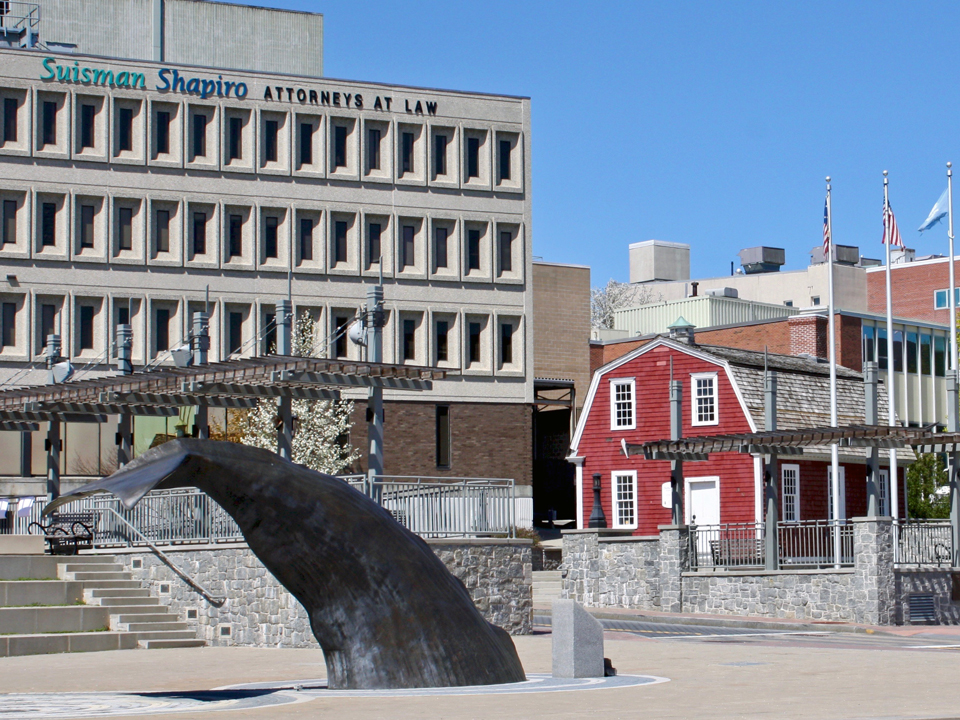
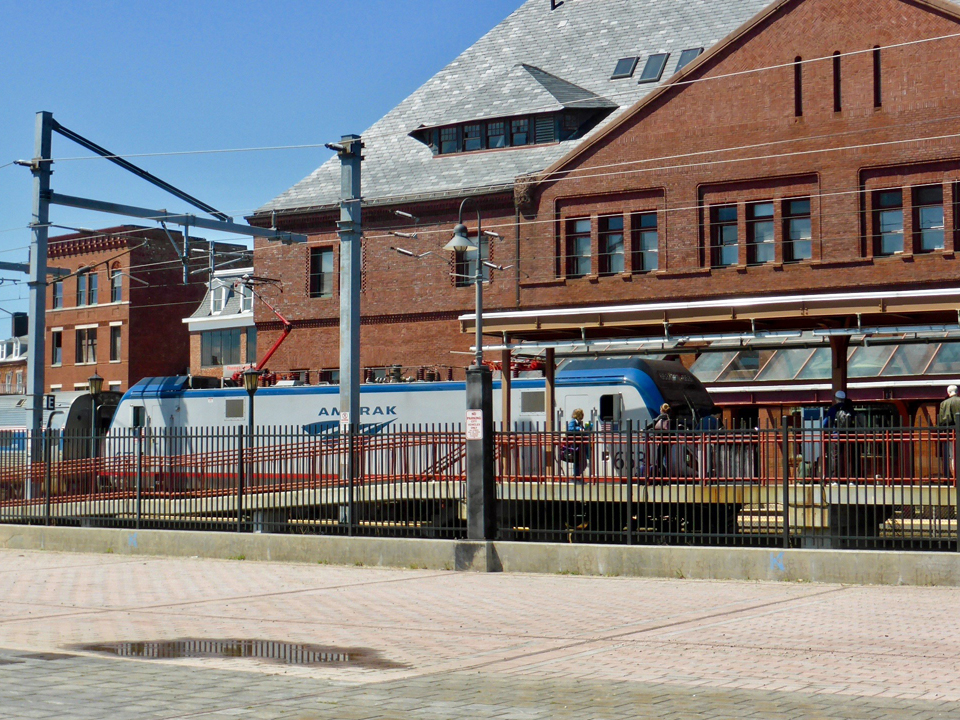
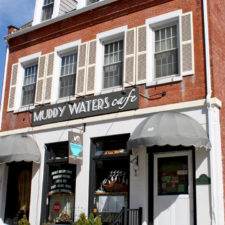
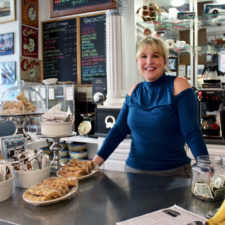
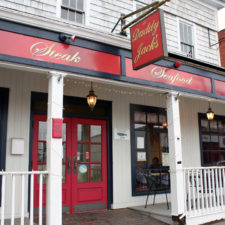
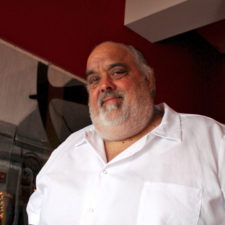
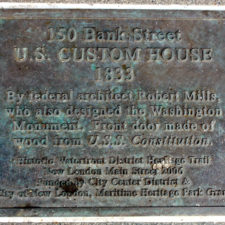
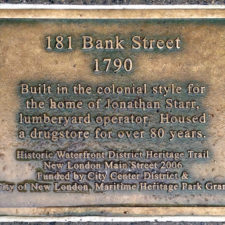
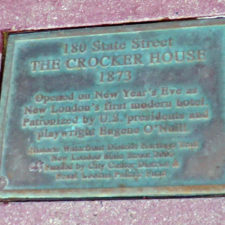
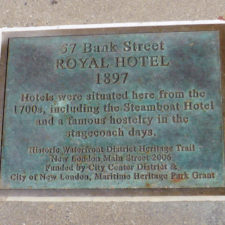
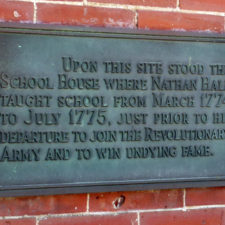
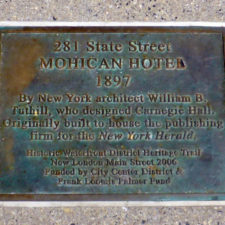
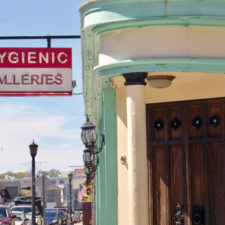
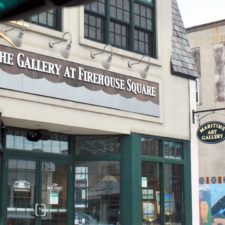
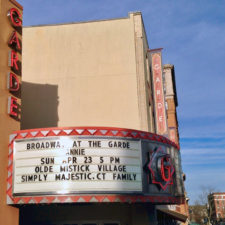
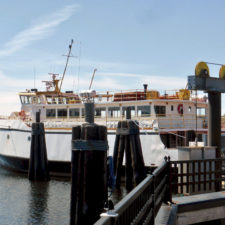
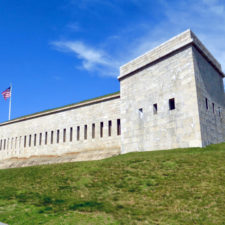
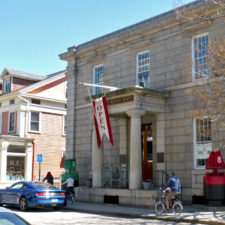
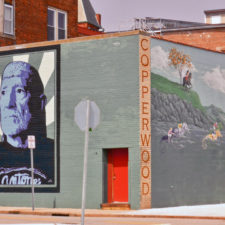
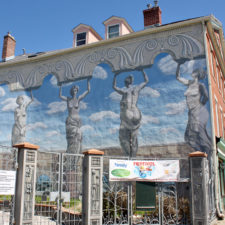
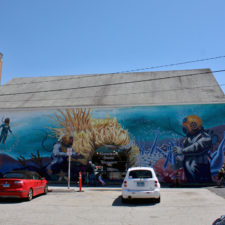
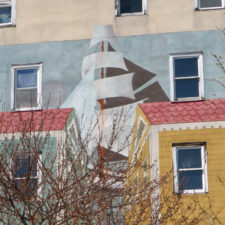
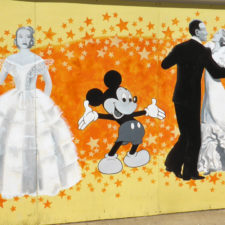

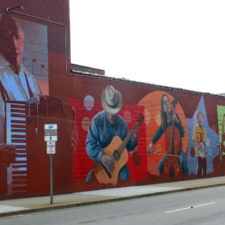
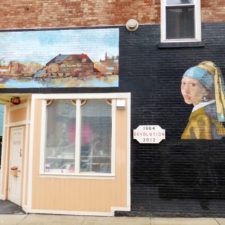
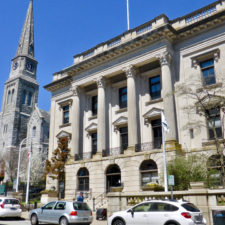
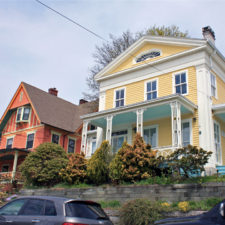
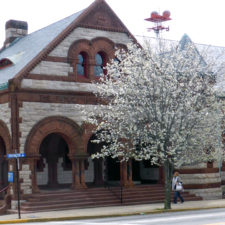
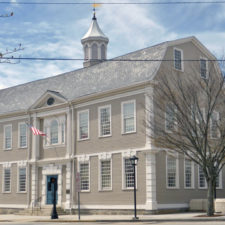
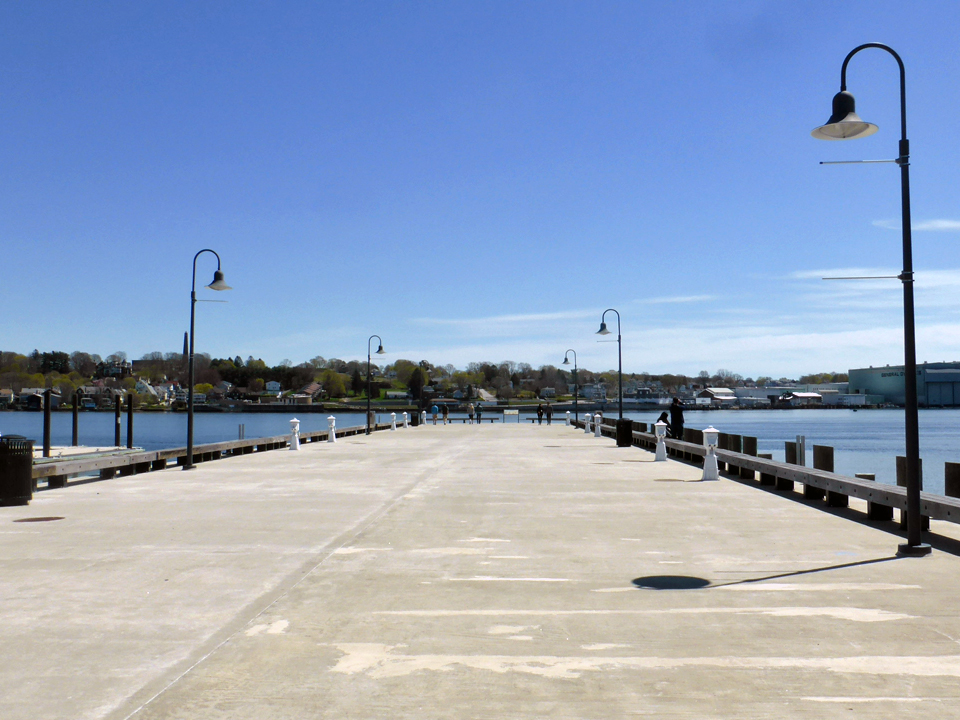
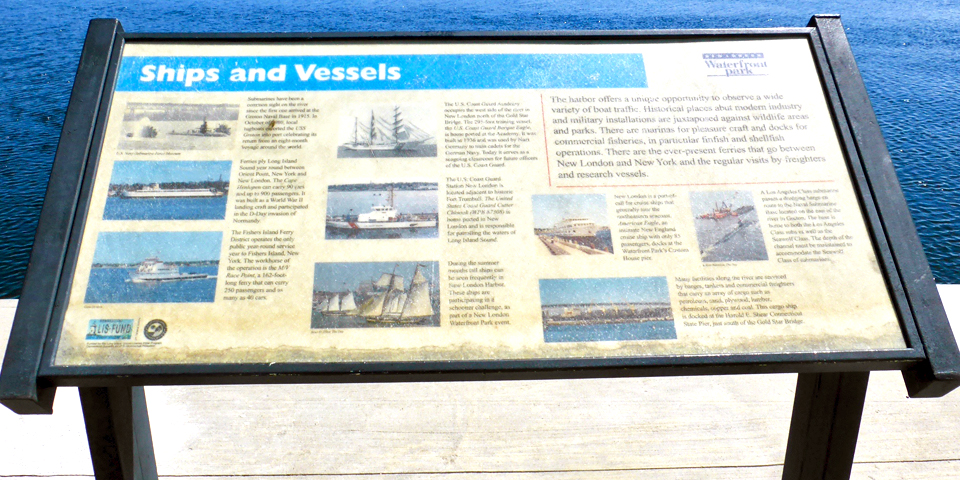
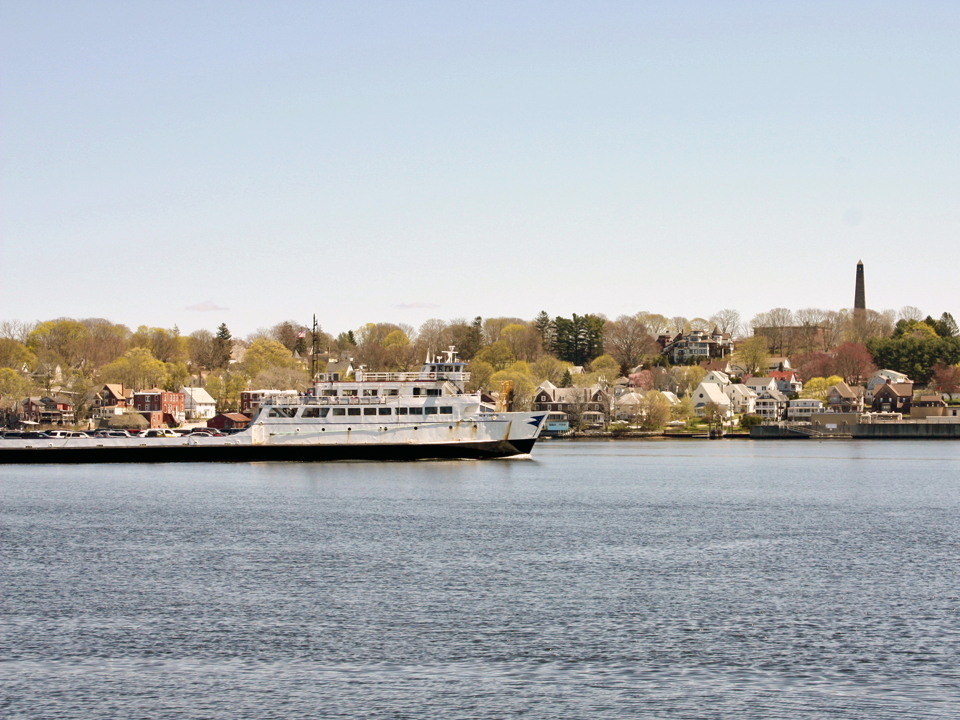
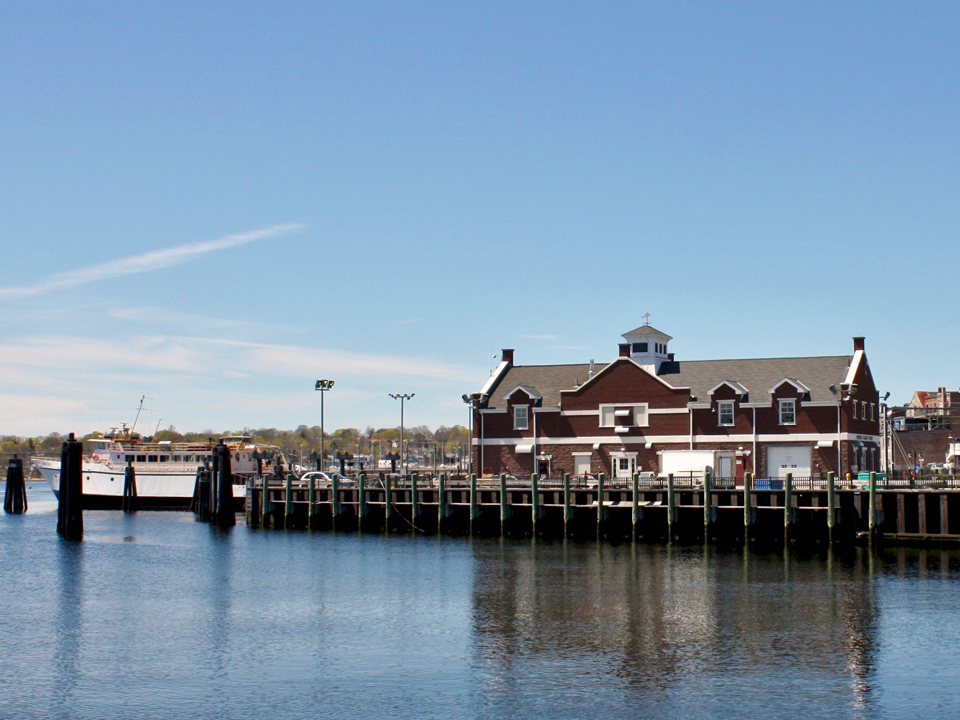
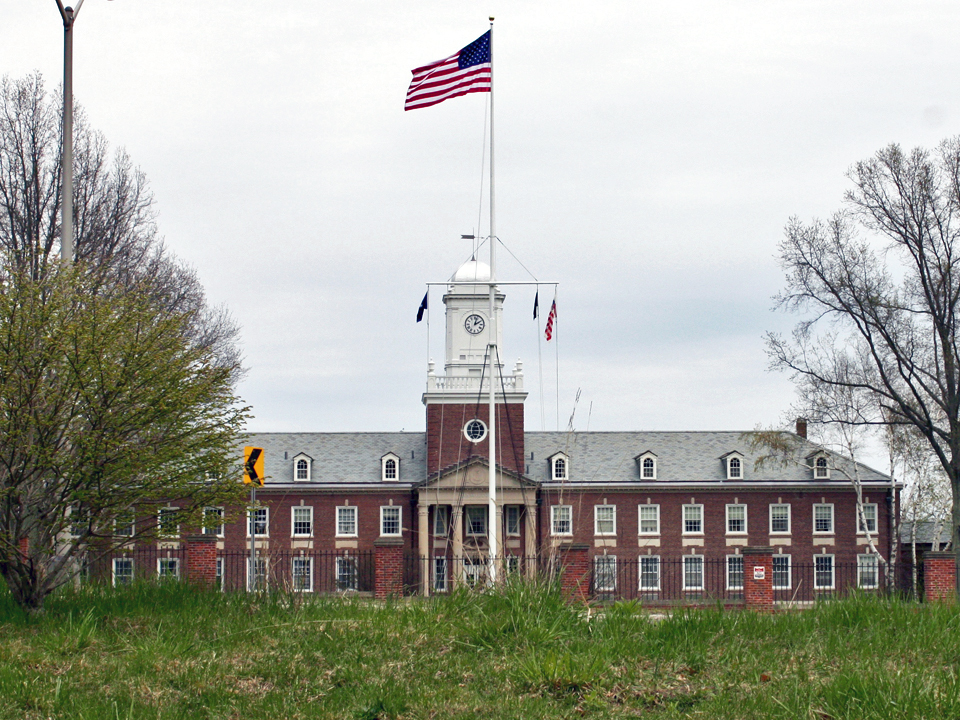
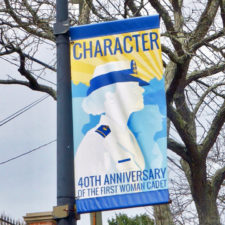
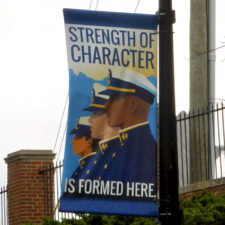

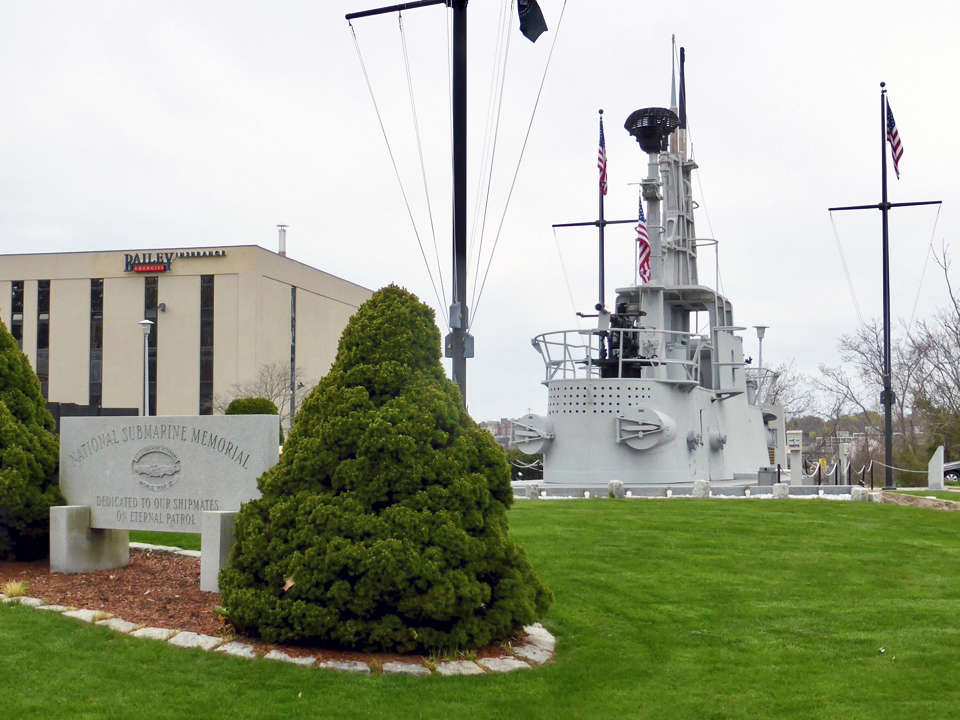
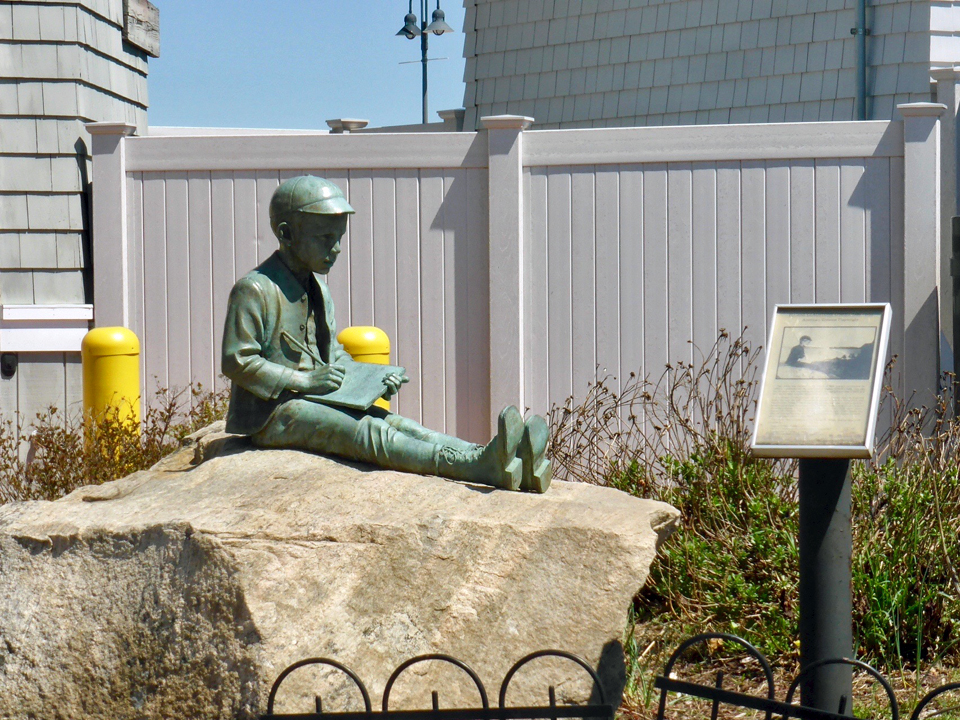
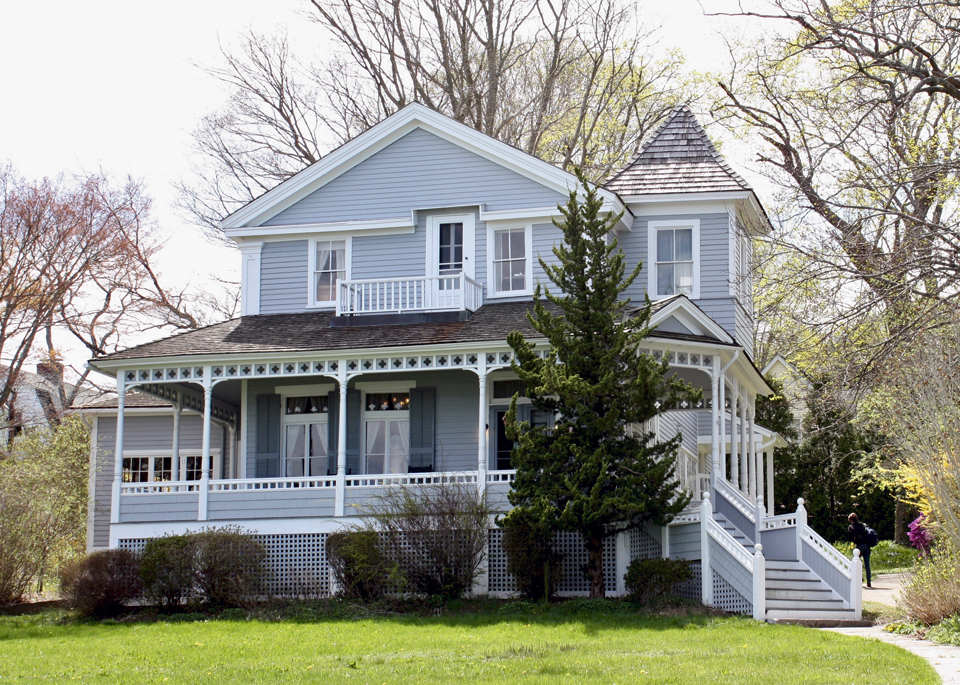
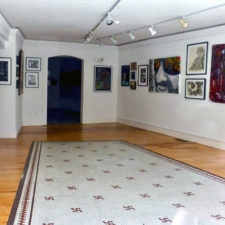
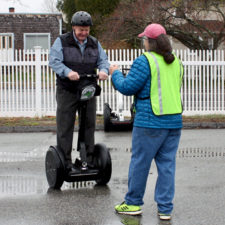
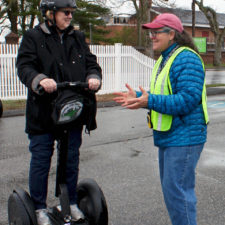
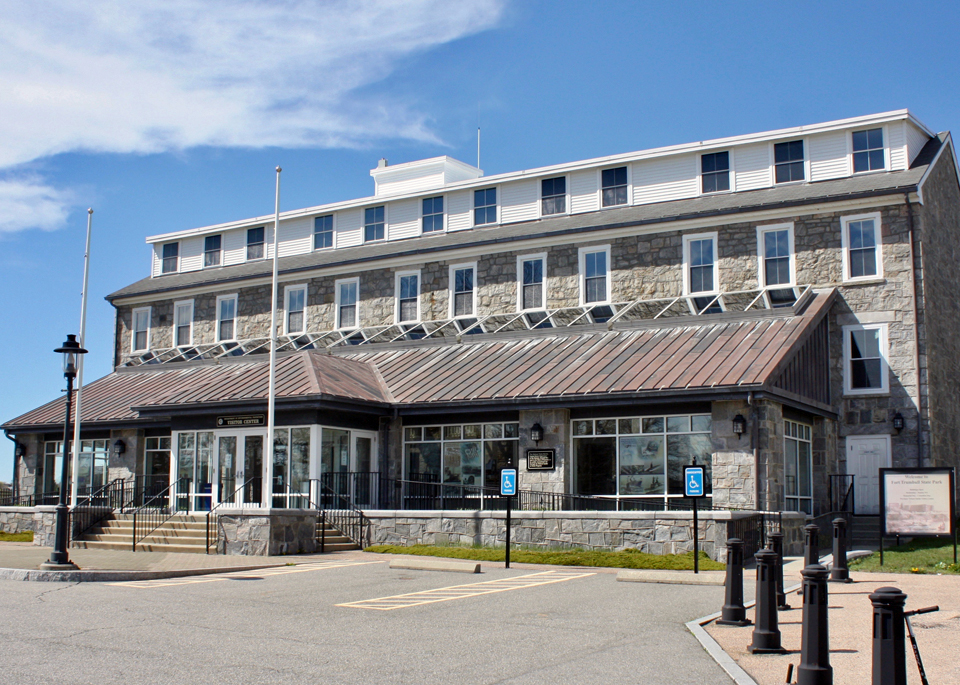
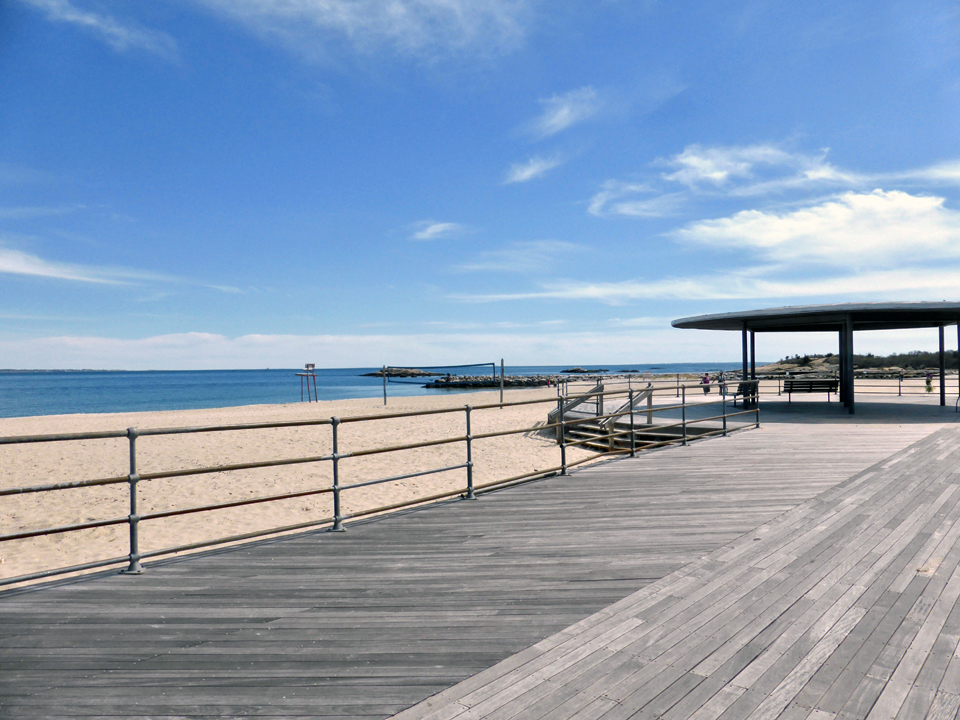
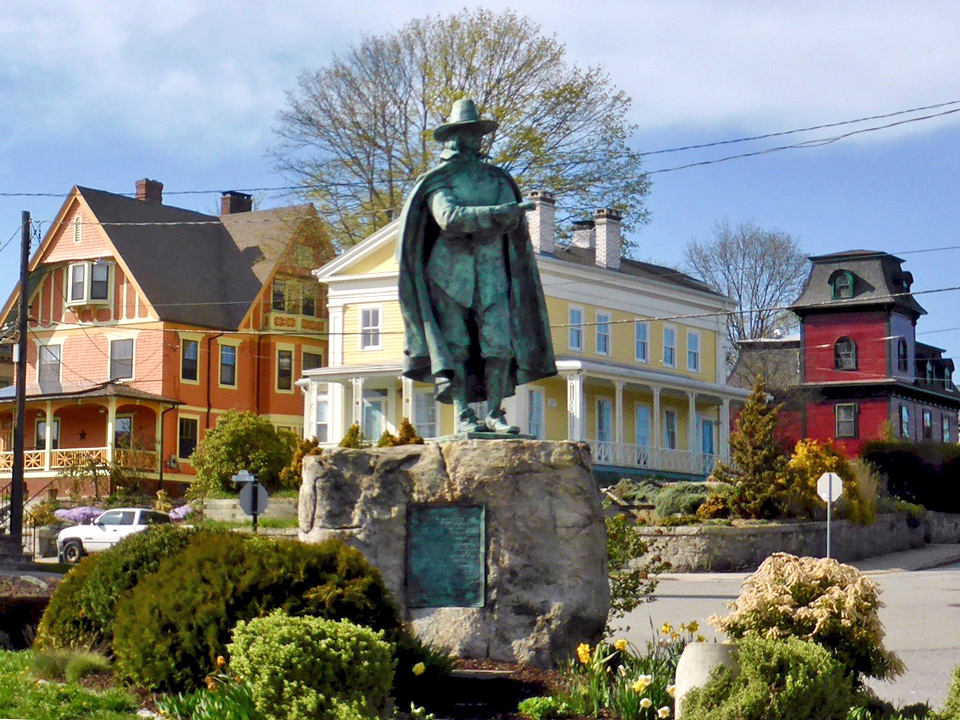
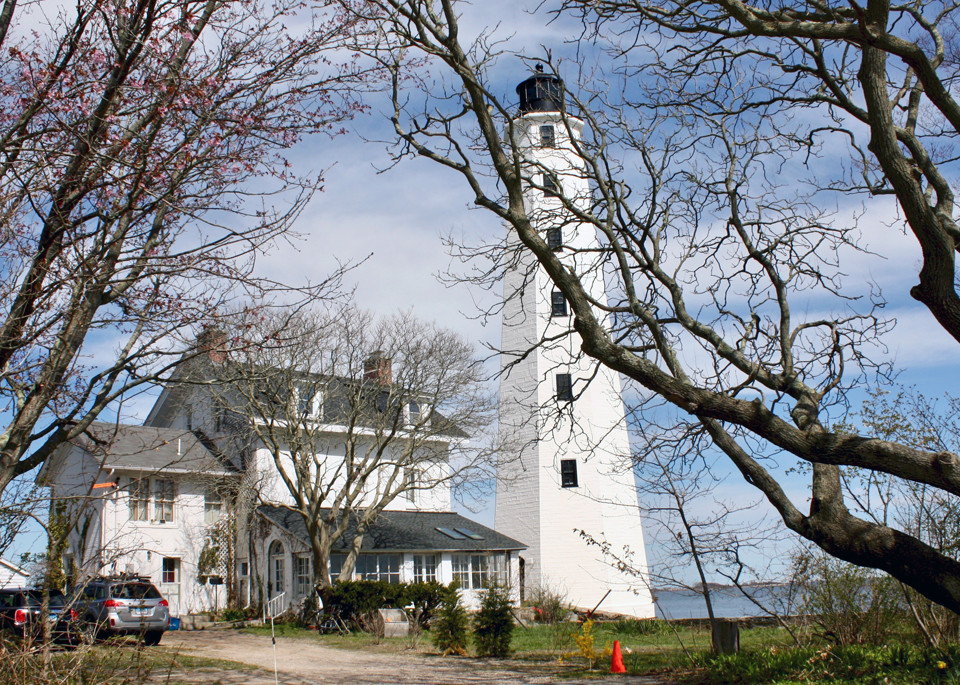
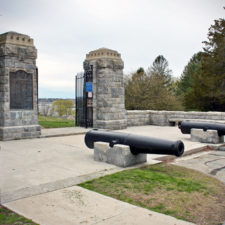
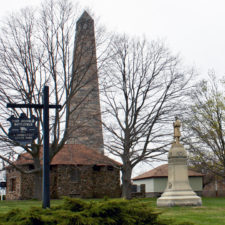
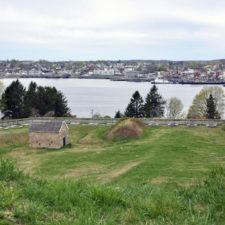
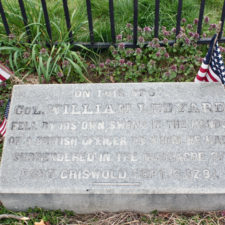
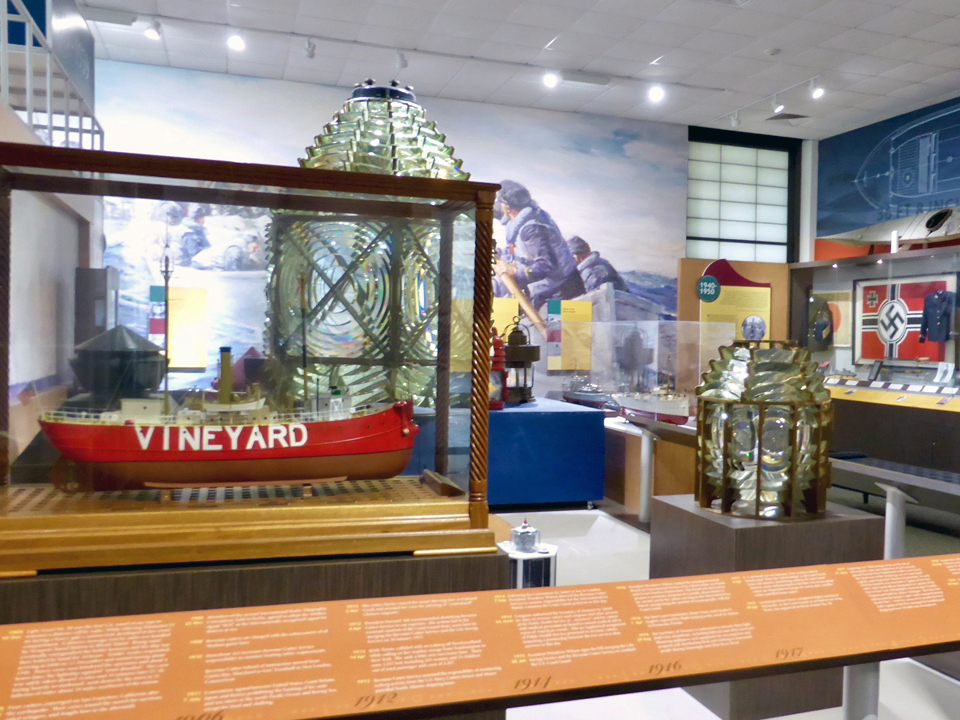
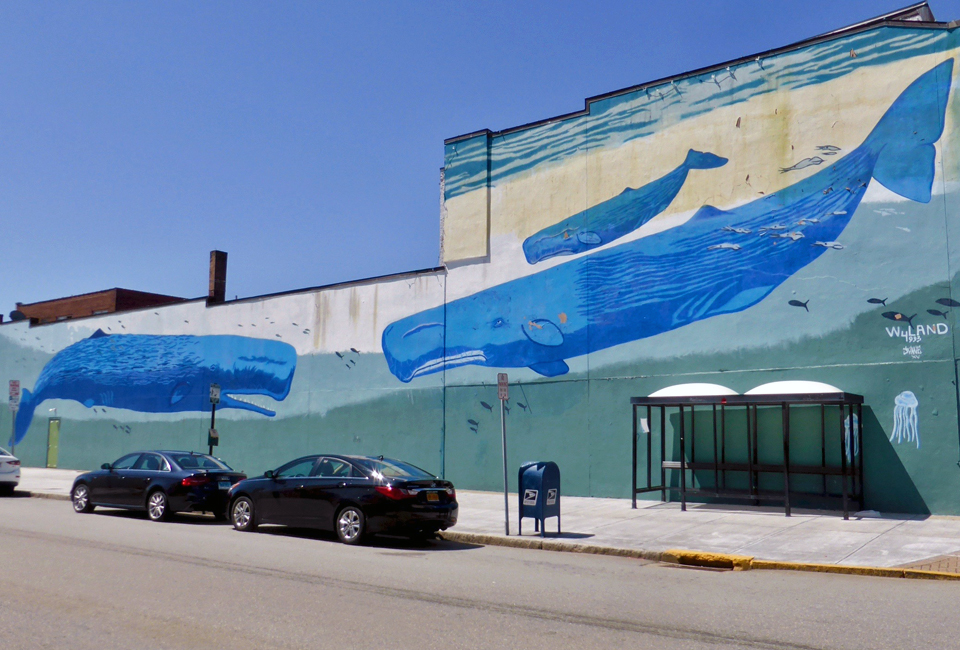
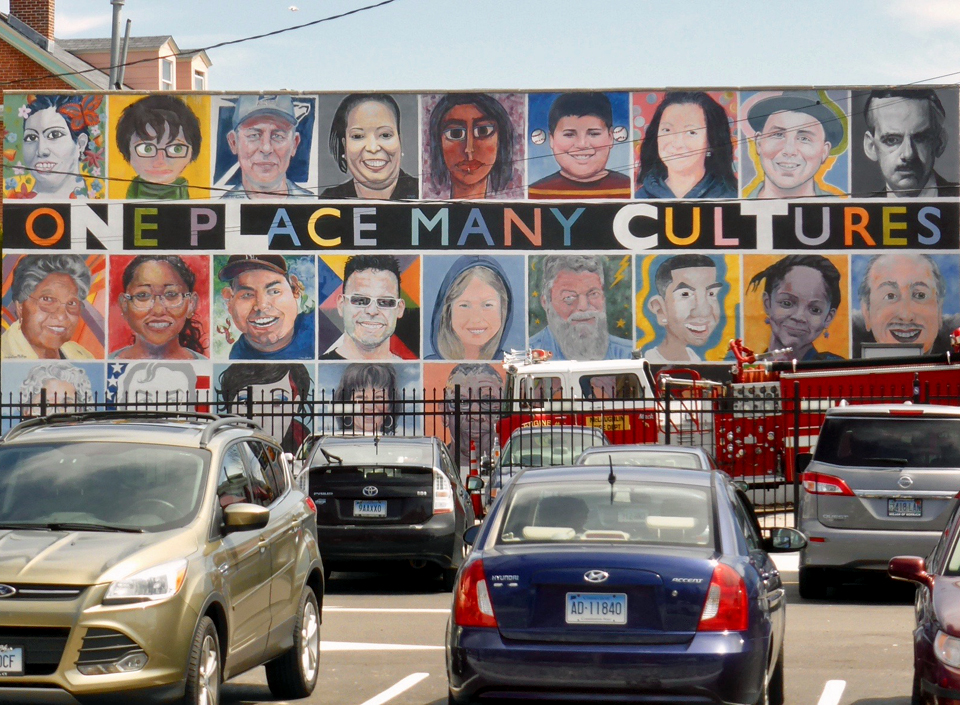
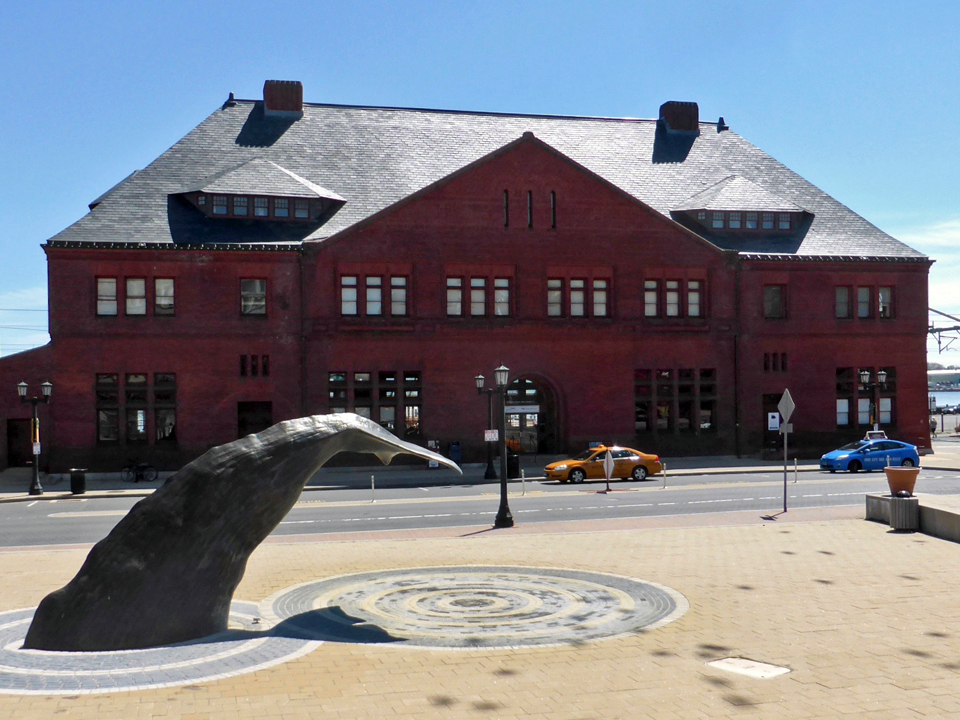
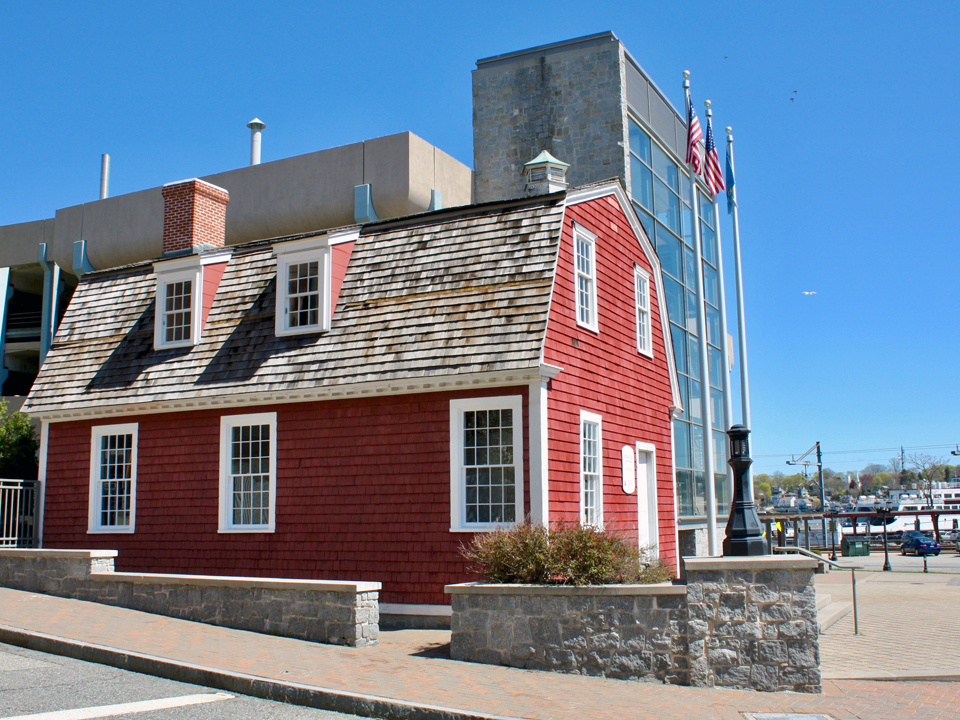
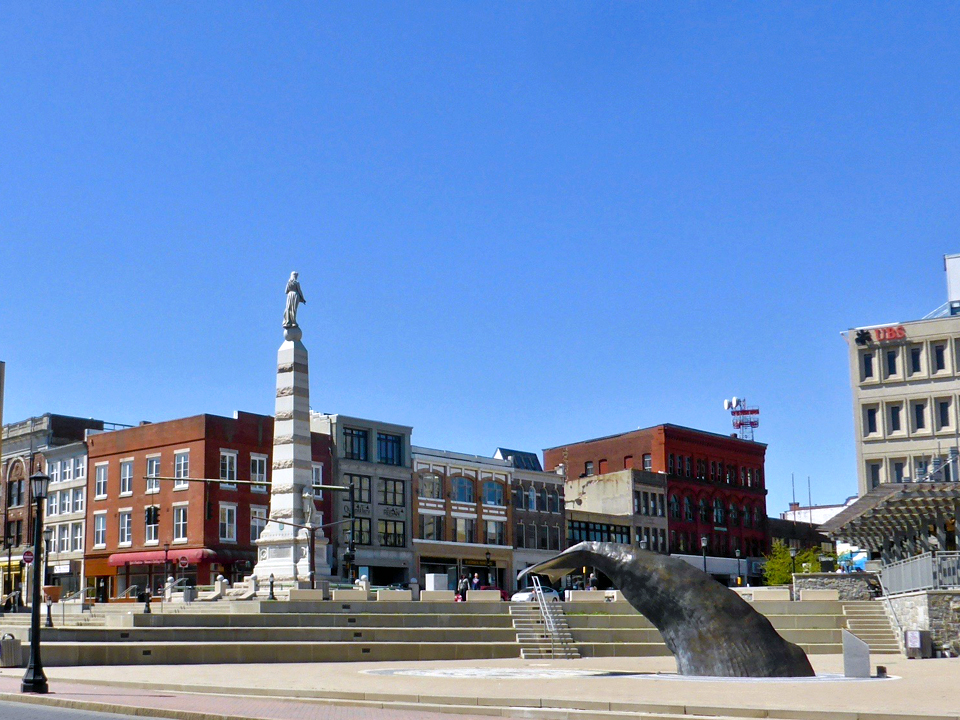
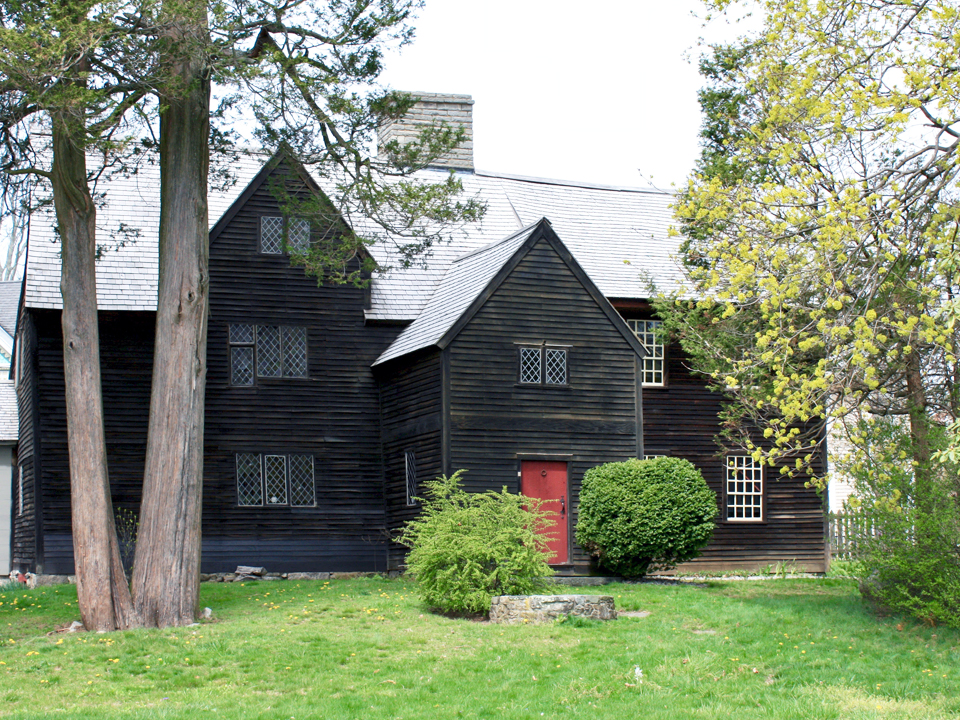
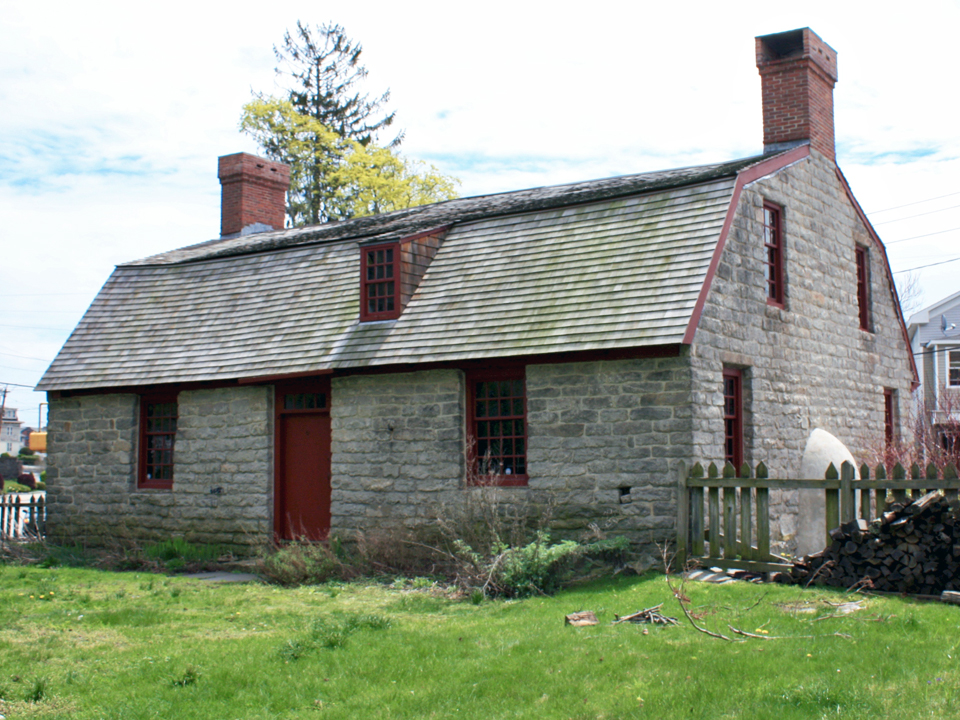

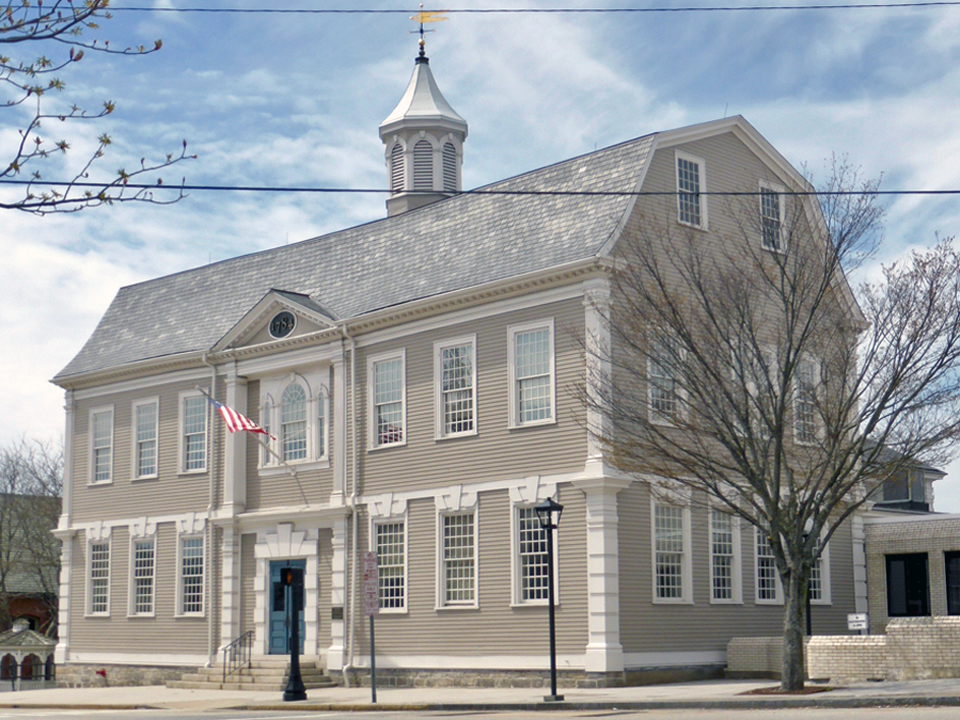
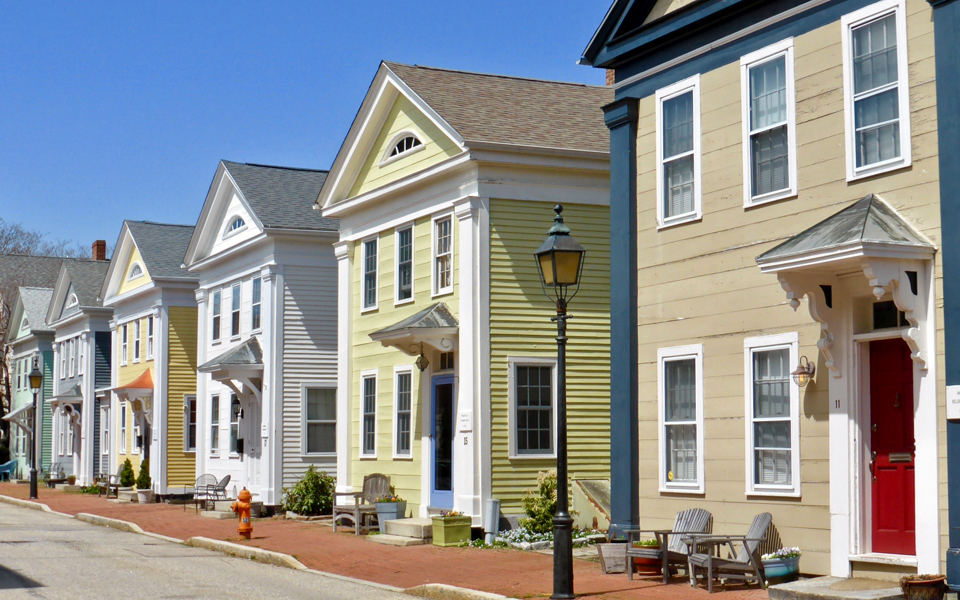
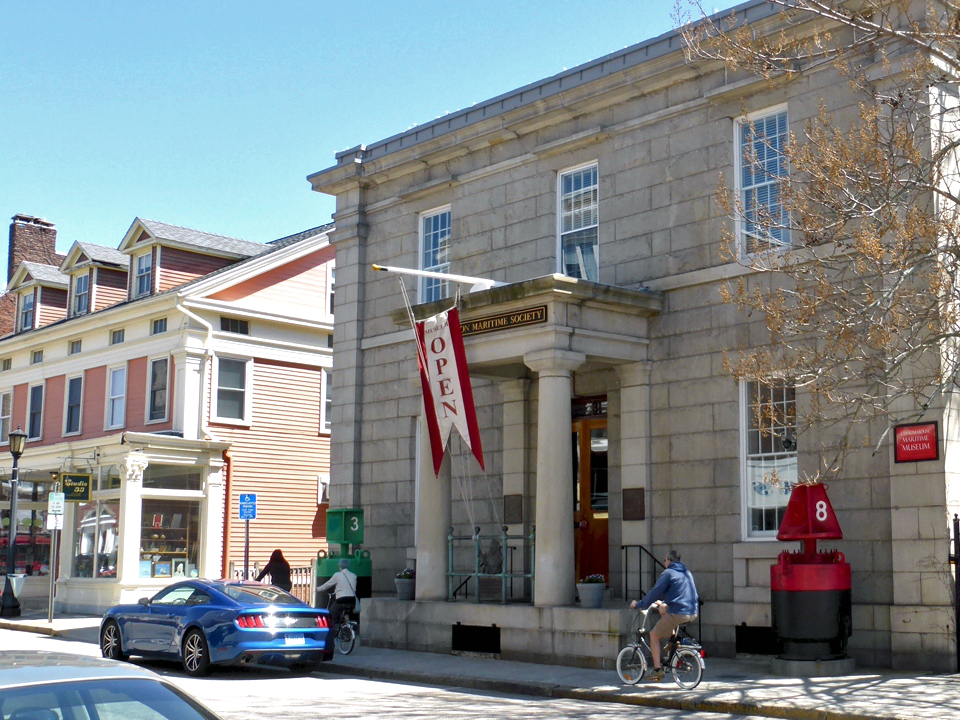
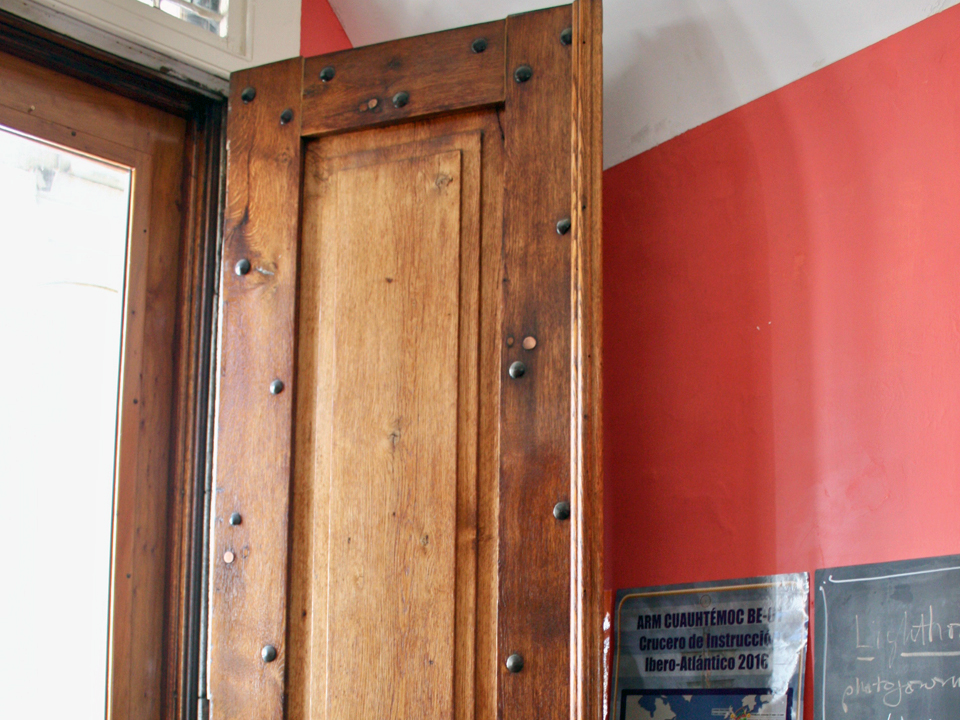
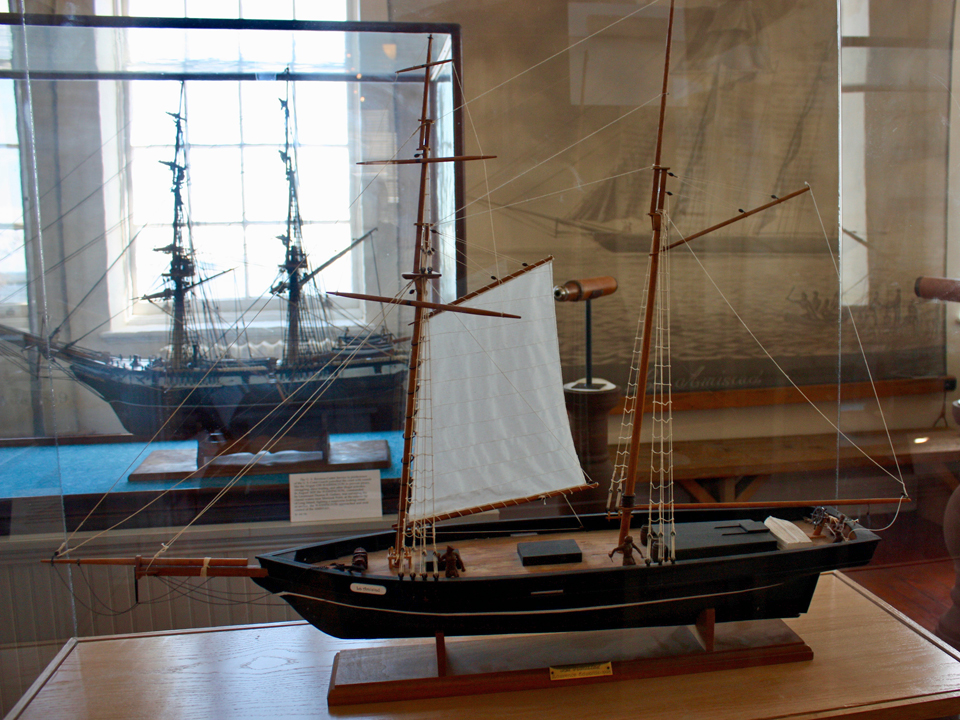
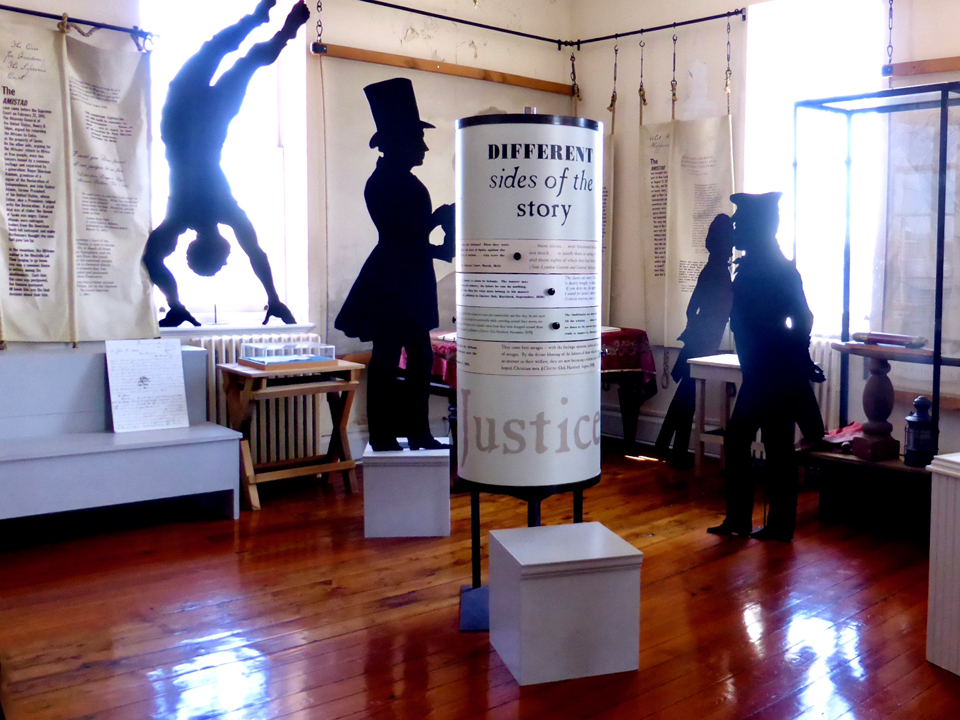
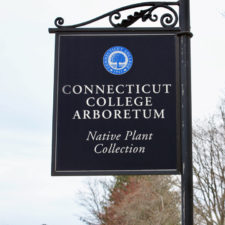
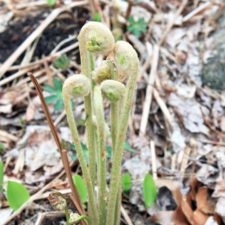
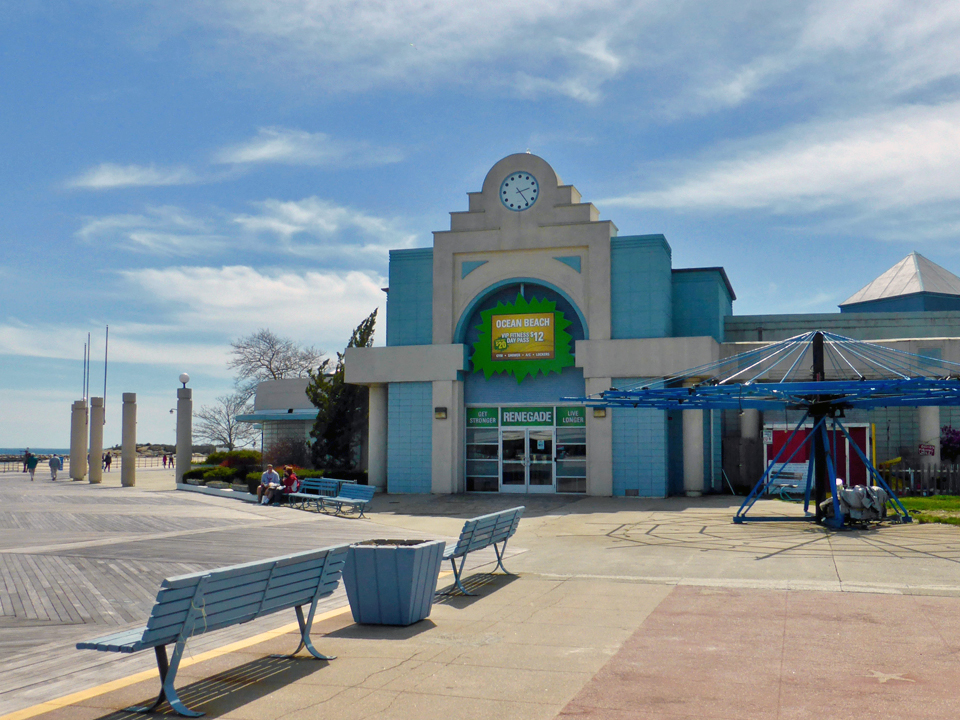
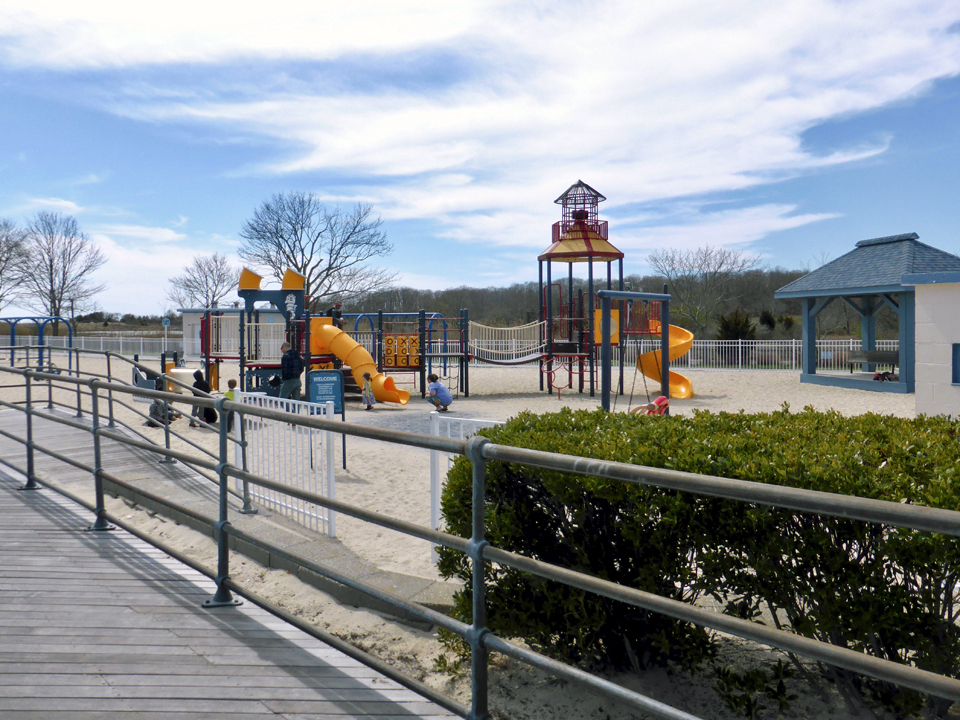
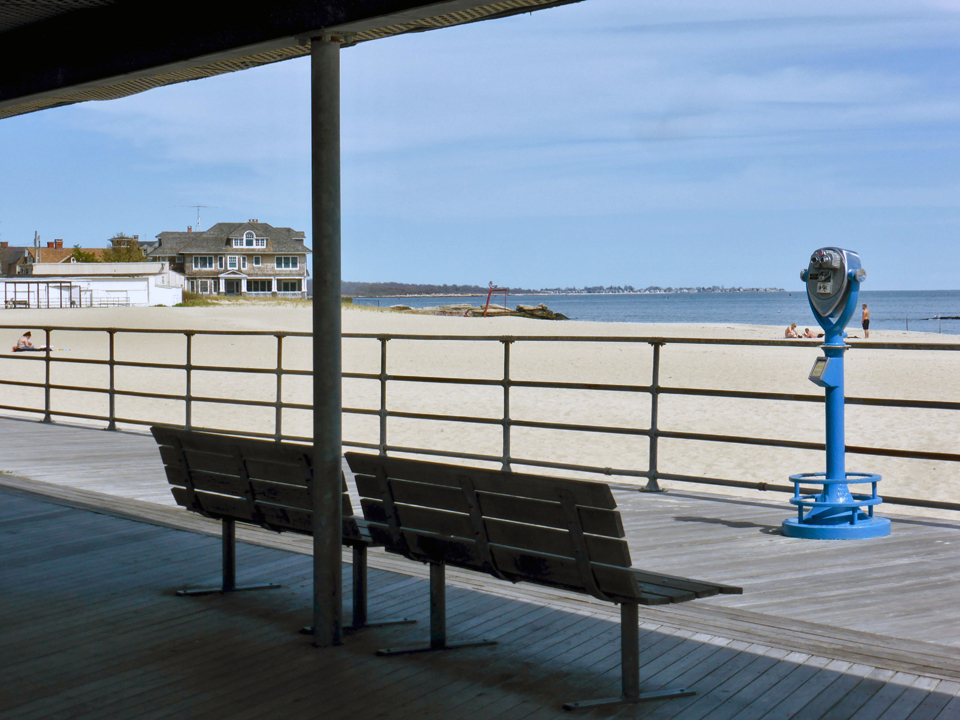
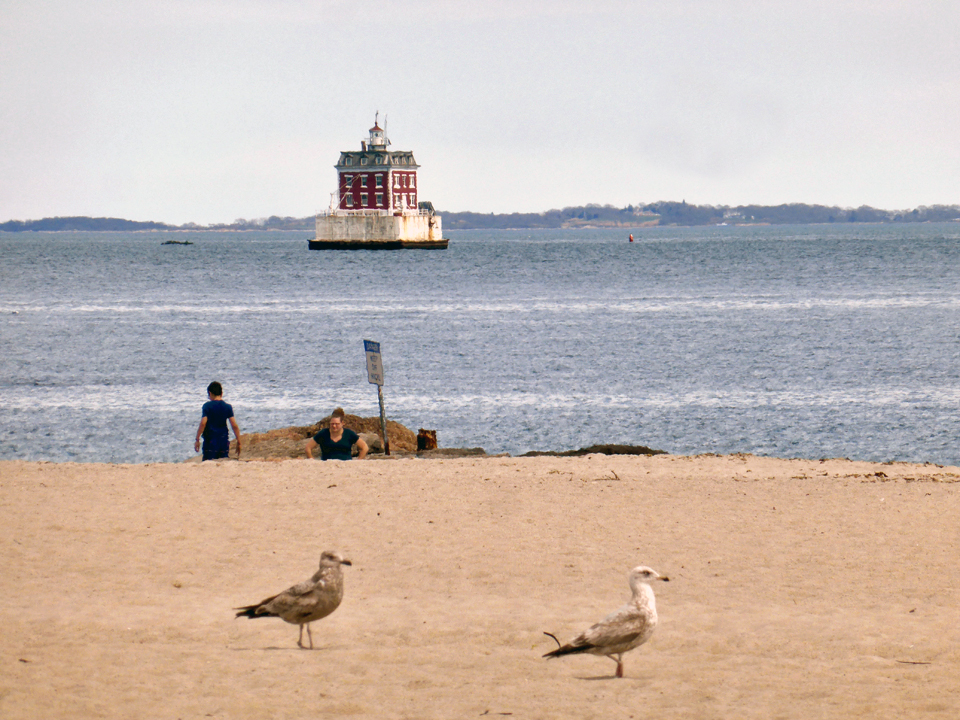
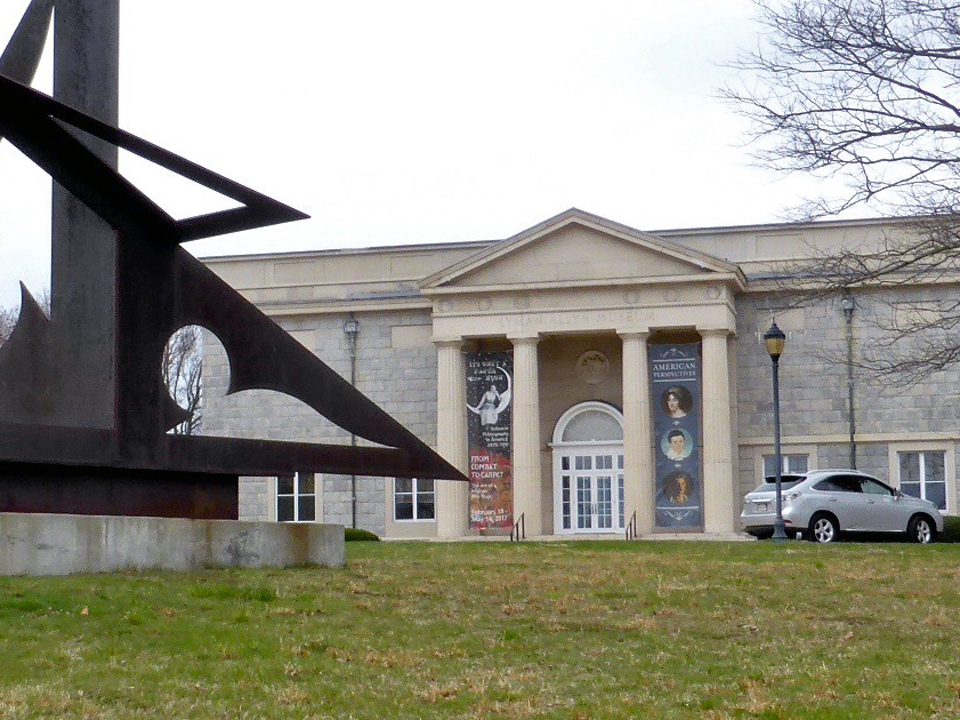
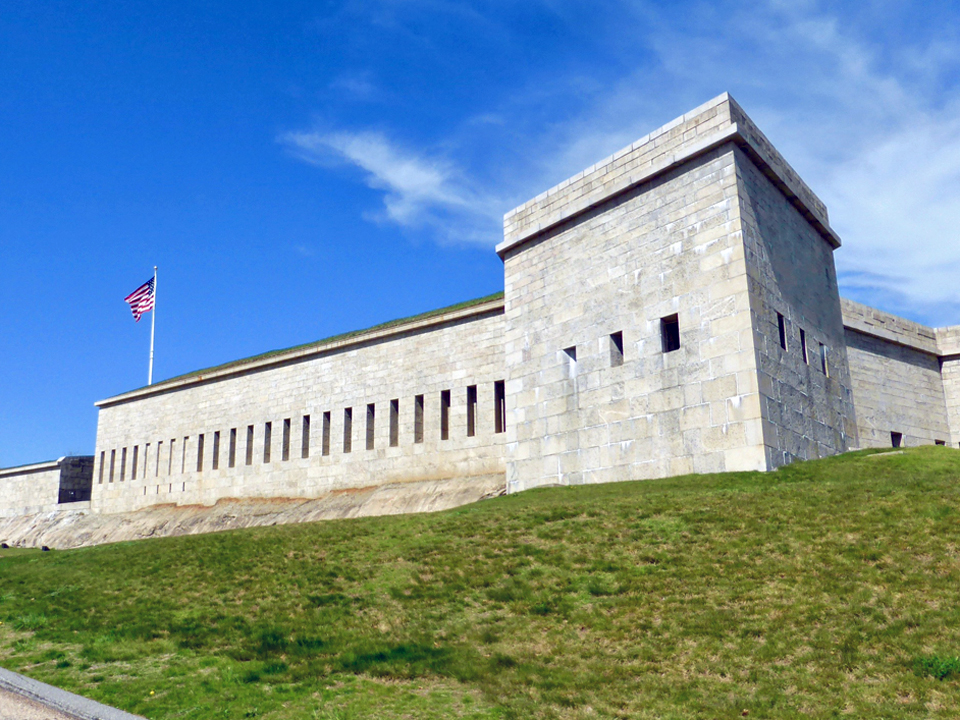
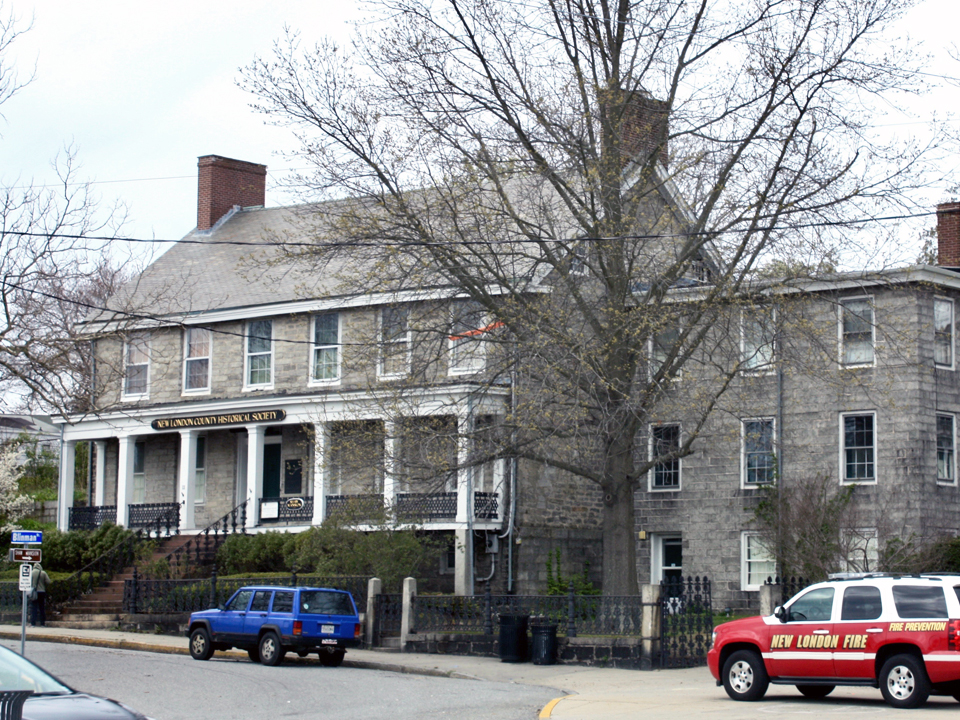
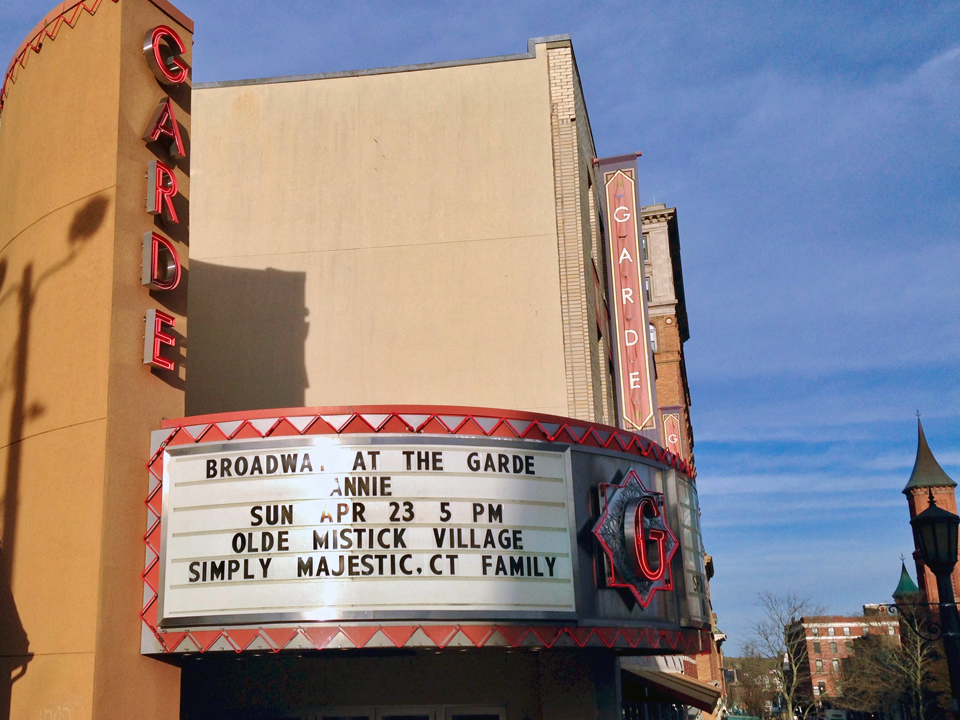
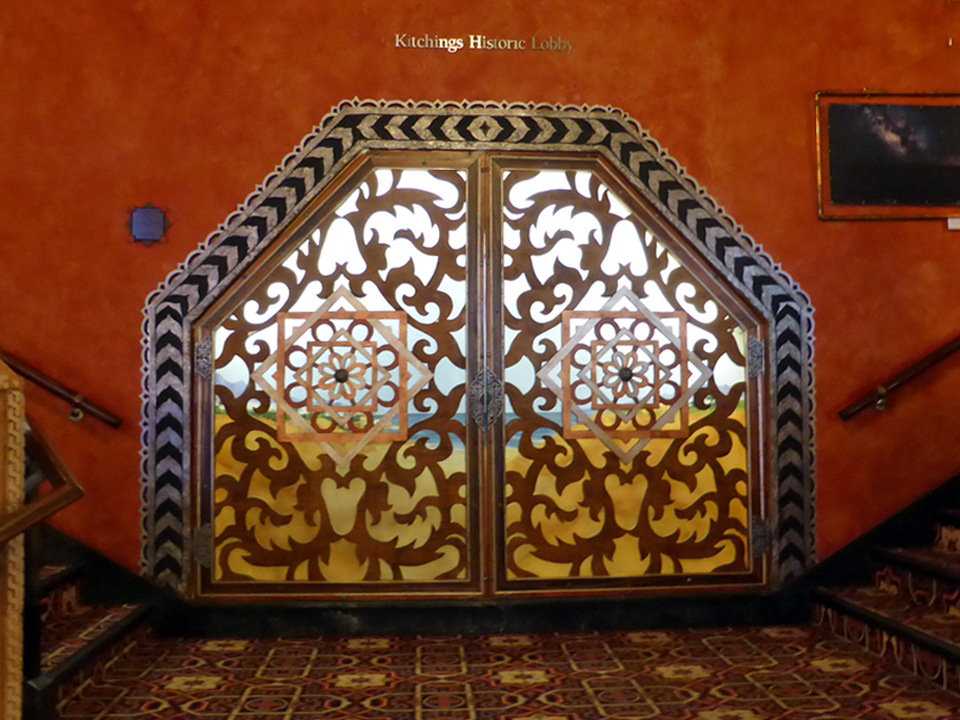
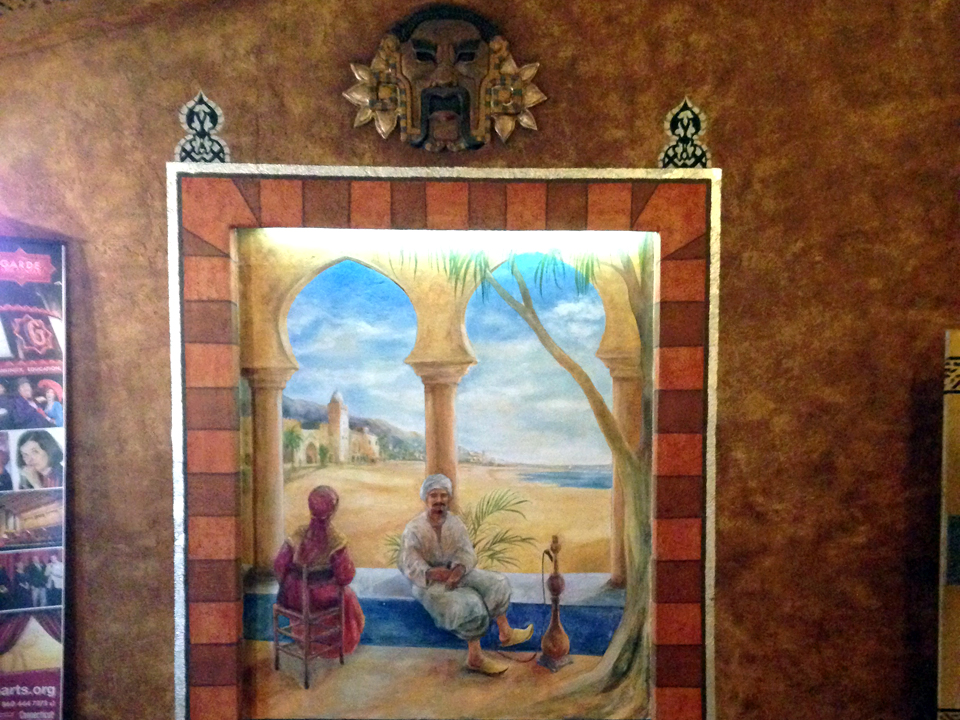
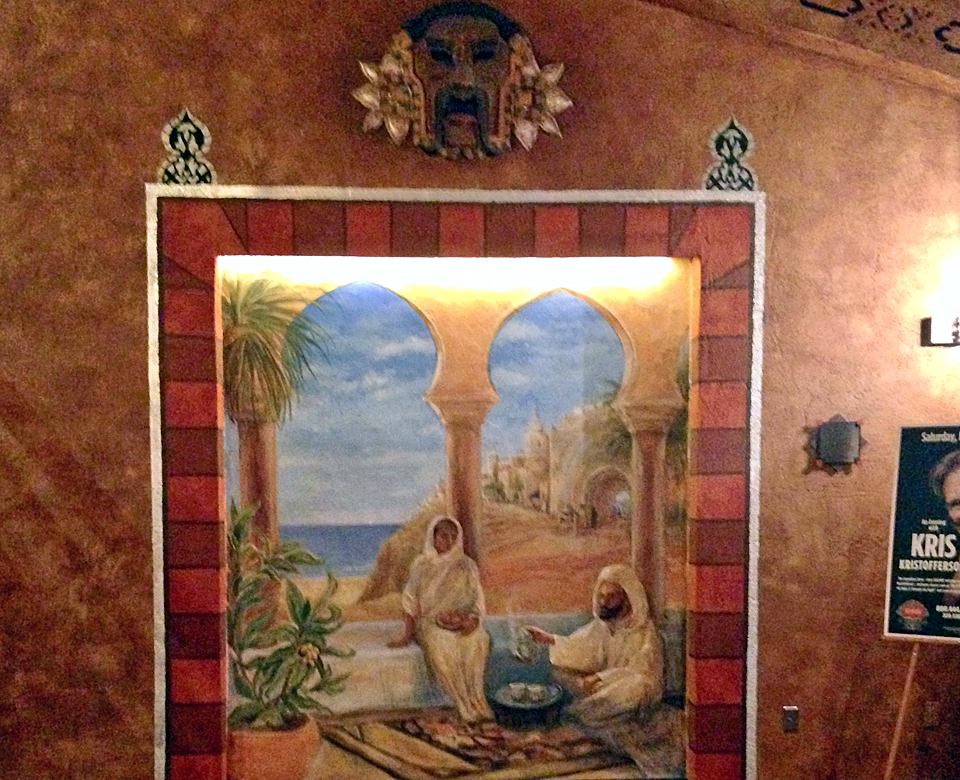
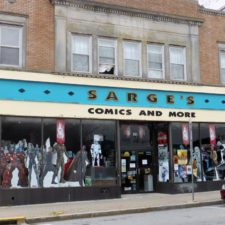
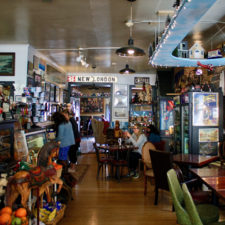
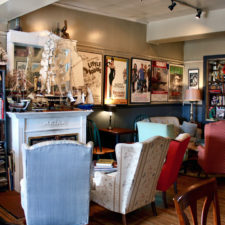
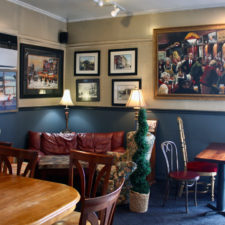
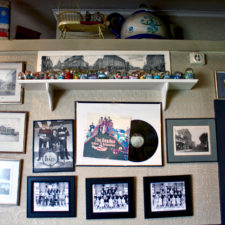
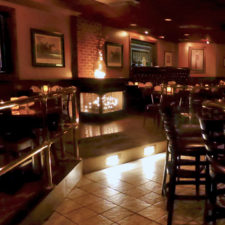
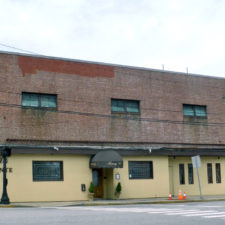
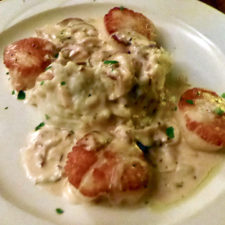
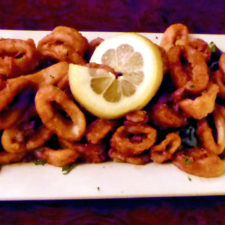
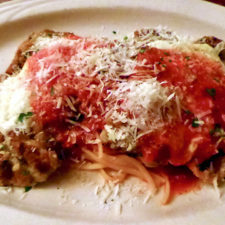
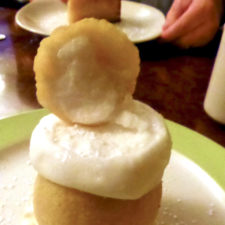
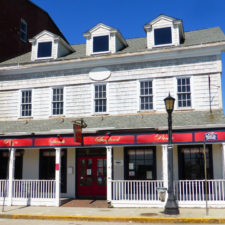
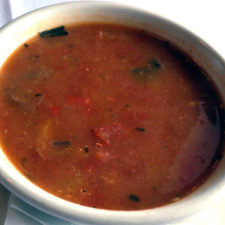

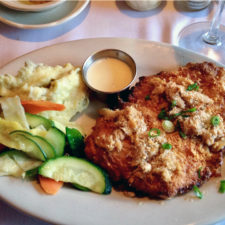
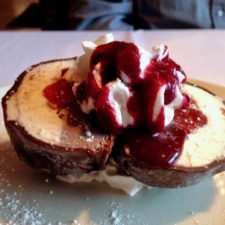
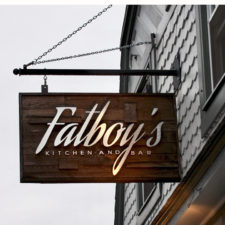
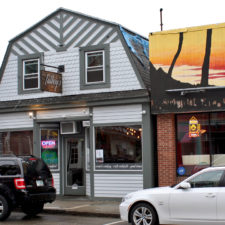
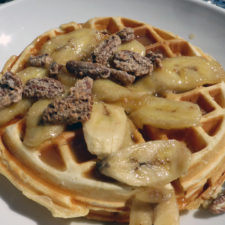
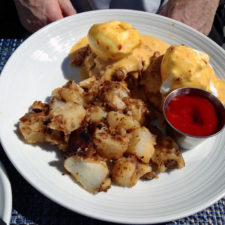
Terrific website
Thank you! New London is a wonderful place for an authentic New England experience away from the nearby touristy areas. Had a most enjoyable visit and are looking forward to returning soon.